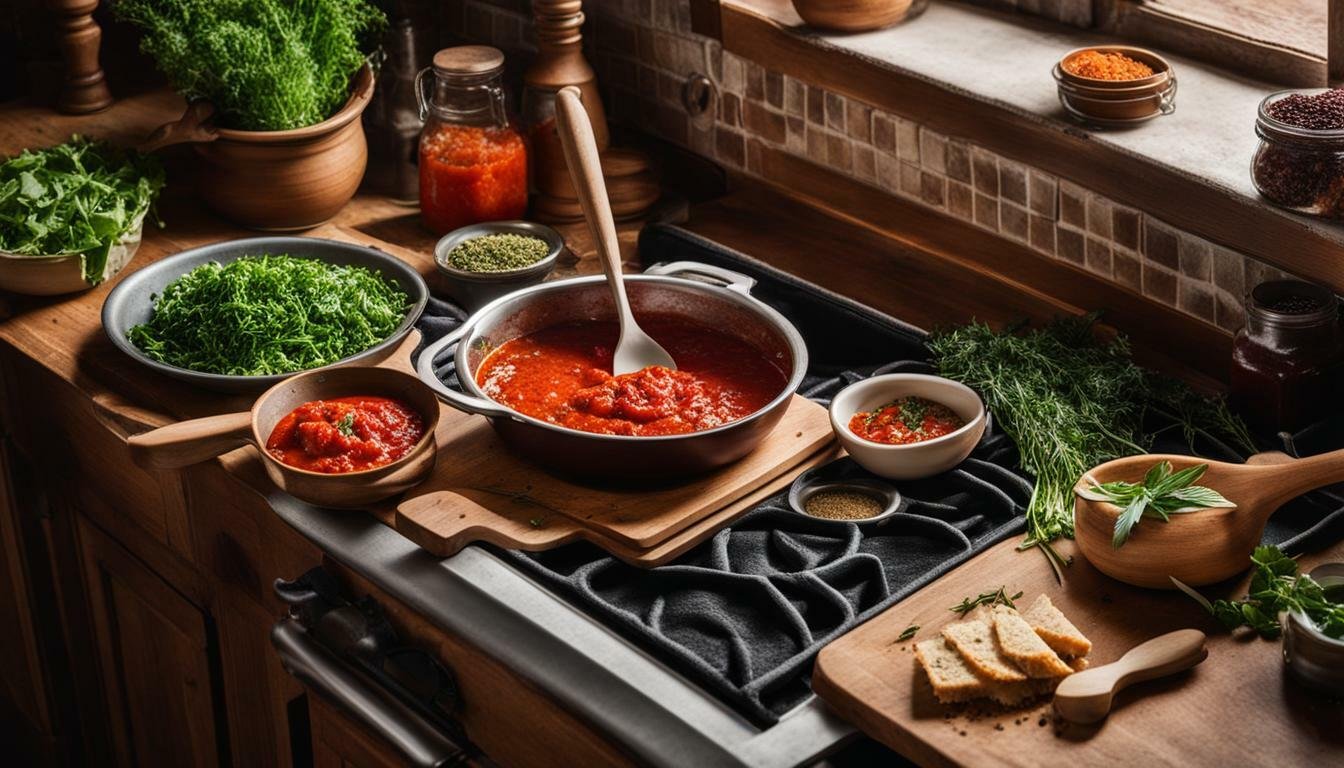Take Me to the Recipes
Imagine strolling through sun-drenched piazzas, ancient ruins whispering tales of emperors, and vibrant markets bursting with fresh flavors. Imagine the aroma of wood-fired pizza mingling with the salty sea breeze, and the warmth of a family gathering around a pasta-laden table. This, my friend, is just a taste of Italy – a land where history, geography, and food intertwine to create an irresistible tapestry for the senses.
Indulge in a culinary fiesta: Dive into the soul of Italy through its food. Savor the melt-in-your-mouth perfection of Neapolitan pizza, the comforting warmth of a Tuscan ribollita soup, or the vibrant flavors of Sicilian caponata.
Discover regional specialties like creamy burrata from Puglia or fresh seafood dishes from Liguria. Italian cuisine is more than just delicious meals; it’s a celebration of fresh ingredients, traditional recipes, and the joy of sharing food with loved ones.
Step back in time
From the majestic Colosseum, a testament to Roman grandeur, to the romantic canals of Venice, echoing with Renaissance charm, Italy’s history unfolds like a captivating storybook.
Explore medieval hill towns perched on emerald hills, marvel at the architectural masterpieces of Florence, and stand in awe before the Sistine Chapel’s breathtaking frescoes.
Embark on a geographical adventure
Journey from the snow-capped peaks of the Dolomites to the sun-kissed shores of Sicily, each region offering unique landscapes and treasures. Hike through rolling Tuscan vineyards, sail turquoise waters along the Amalfi Coast, or lose yourself in the vibrant chaos of Naples’ bustling streets.
This article is your invitation to embark on a multi-sensory journey through Italy. We’ll explore the fascinating history that shaped its vibrant culture, delve into the diverse landscapes that inspire its regional cuisines, and tantalize your taste buds with mouthwatering descriptions of its iconic dishes. So, buckle up, adventurer, and prepare to be swept away by the magic of Italy!
Take Me to the Recipes
Key Takeaways
- Italy’s national dish is a symbol of Italian culinary pride and heritage.
- Traditional Italian cuisine is diverse, featuring regional specialties and classic dishes.
- Authentic Italian food is characterized by fresh ingredients, simplicity, and attention to detail.
- Exploring Italy’s national dish offers insight into the rich tapestry of Italian food culture.
- Italian cuisine continues to captivate food enthusiasts around the world with its authenticity and flavors.
Where is Italy?

Italy is a country located in Southern Europe comprising the boot-shaped Italian peninsula and a number of islands including Sicily and Sardinia. Neighboring countries include Austria, France, Holy See, San Marino, Slovenia, and Switzerland
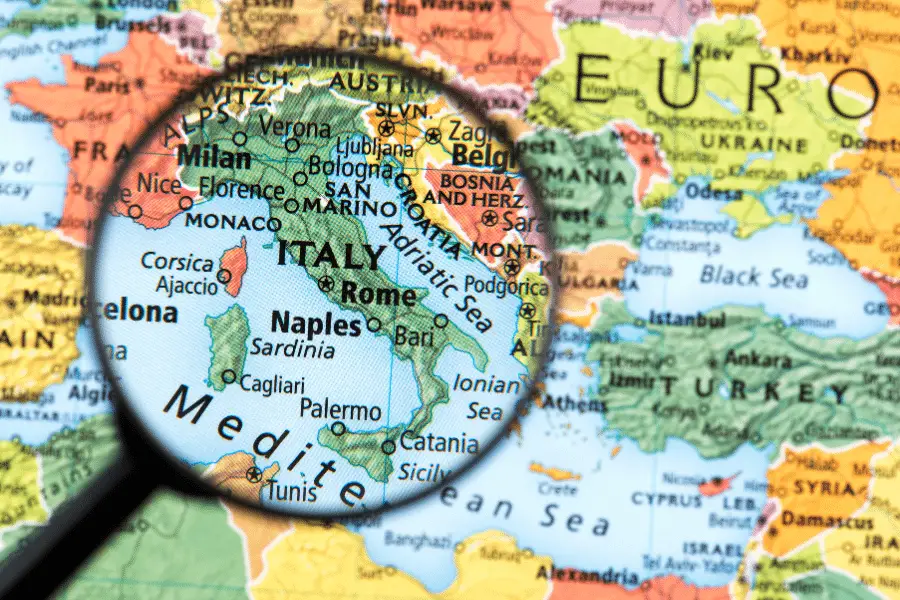
Index to the Contents
- Take Me to the Recipes
- More Articles
- Interesting Facts About Italy
- Italy’s History and the Effect It Has Had on the Cuisine
- What Makes Italian Food So Interesting?
- Understanding the Essence of Italian Cuisine
- Italian Culinary Traditions
- Exploring the Italian Food Ingredients: The Flavors of Italy
- What is Italy’s National Dish
- Traditional Italian Cuisine: A Culinary Celebration
- The Best Italian Food – A Gastronomic Delight
- What is the Most Famous Italian Pasta Dish?
- What Food is Most Eaten in Italy?
- How Healthy is Italian Food?
- Timeless Italian Cuisine – 22 Delicious Recipes you can Try at Home
- Conclusion
- FAQ’s
You may also be interested in the Following Articles
- North and South American Cuisine – A Culinary Expedition
- Europe Cuisine: Savor the Continent’s Best Culinary Secrets!
- African Cuisine: Discover the Bold Flavors & Global Charm!
- Asian Cuisine Unlock its Secrets – Taste, Health & Global Influence!
Savor Iconic Italian Food – Click on each tantalizing picture to open up the Recipe

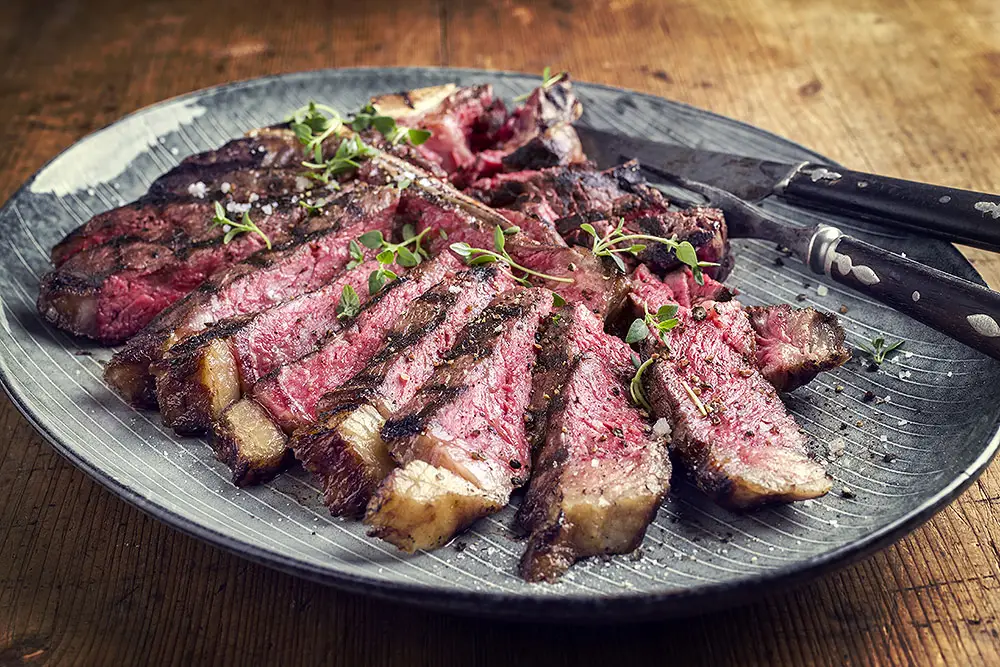
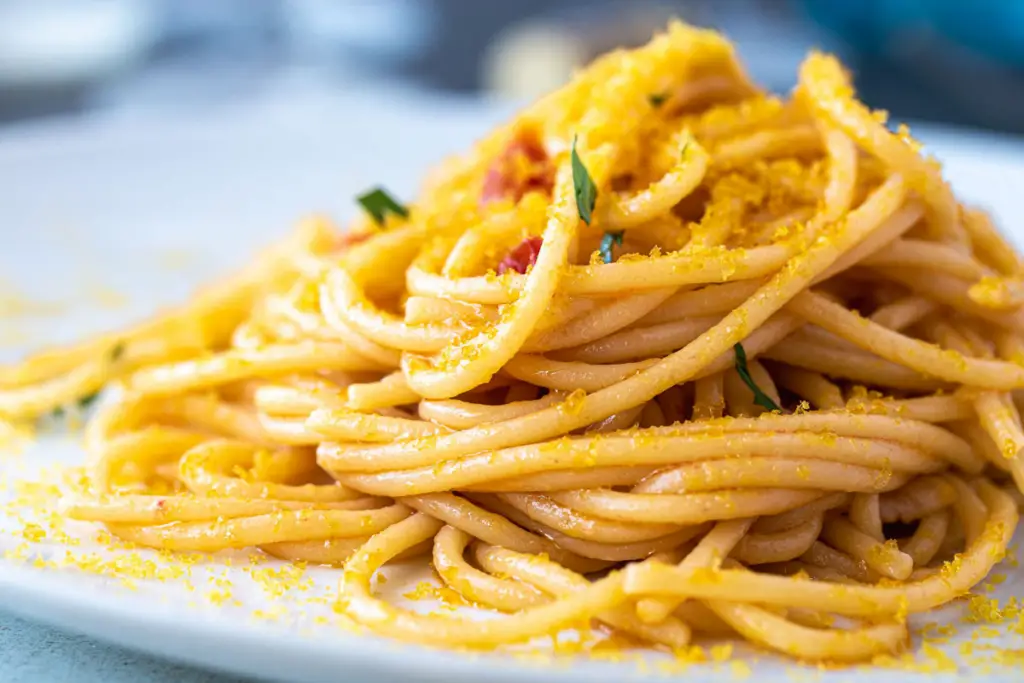
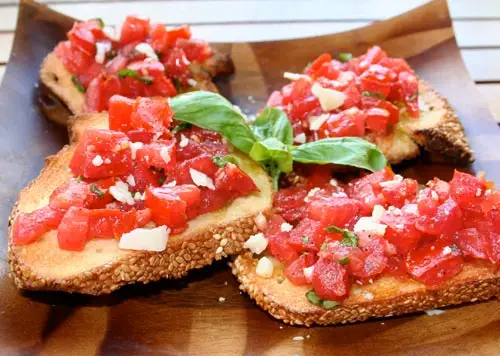

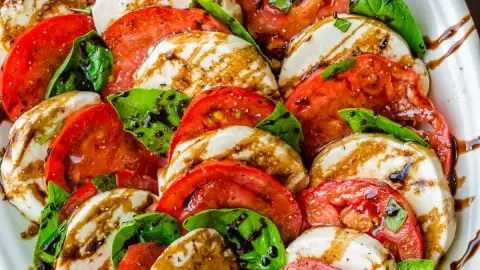



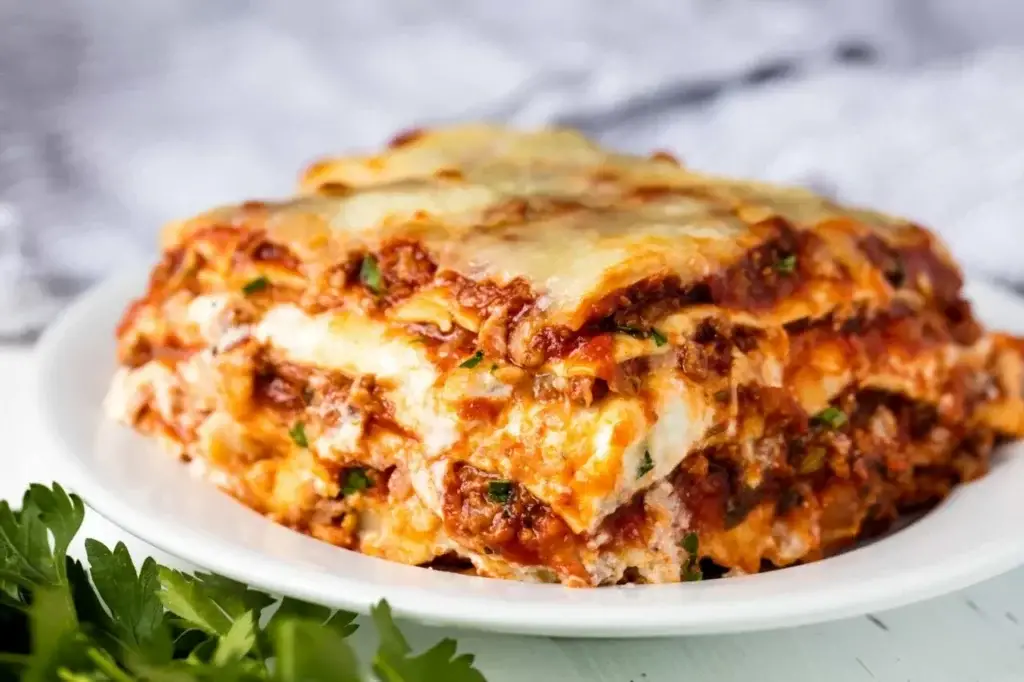
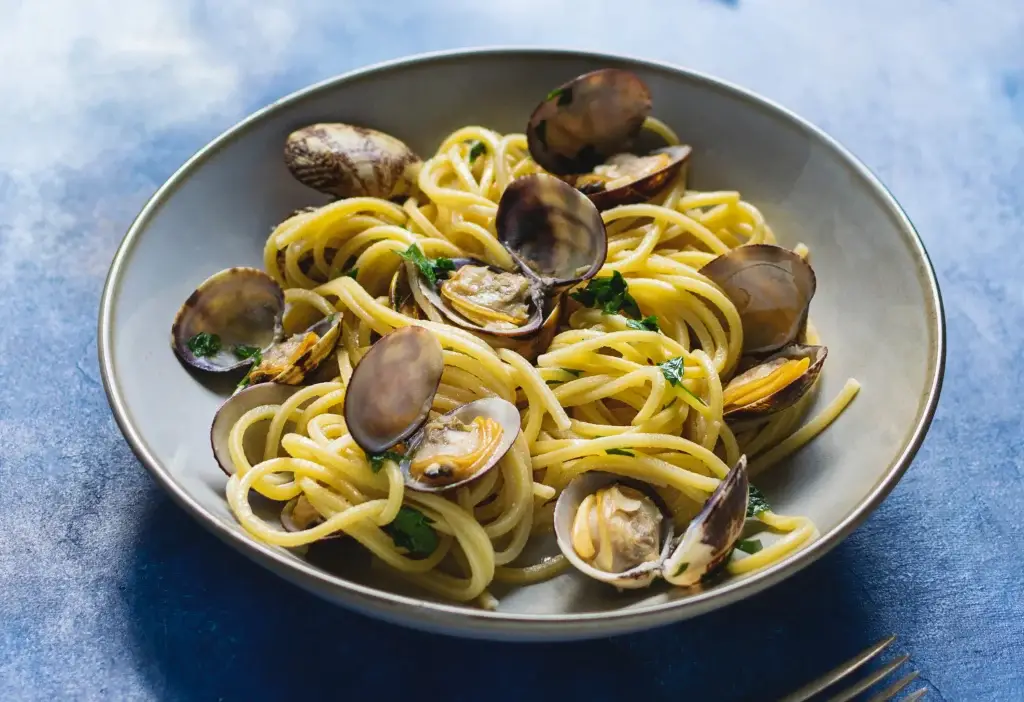
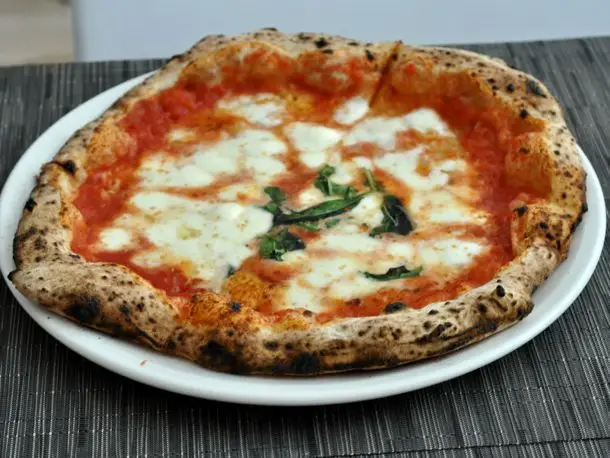
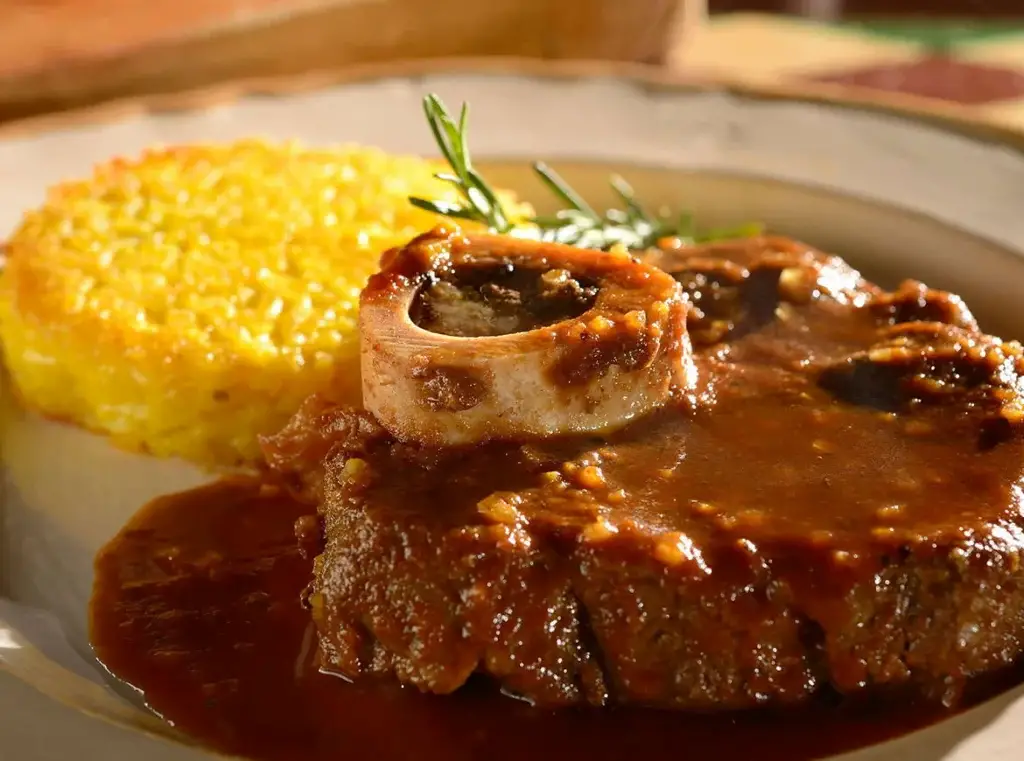
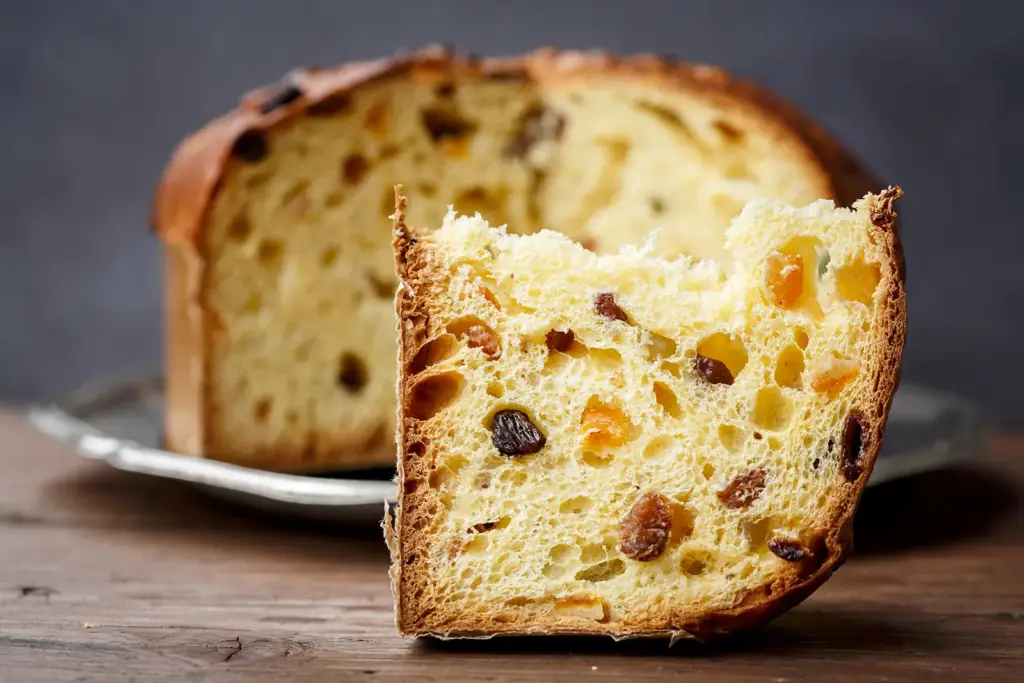
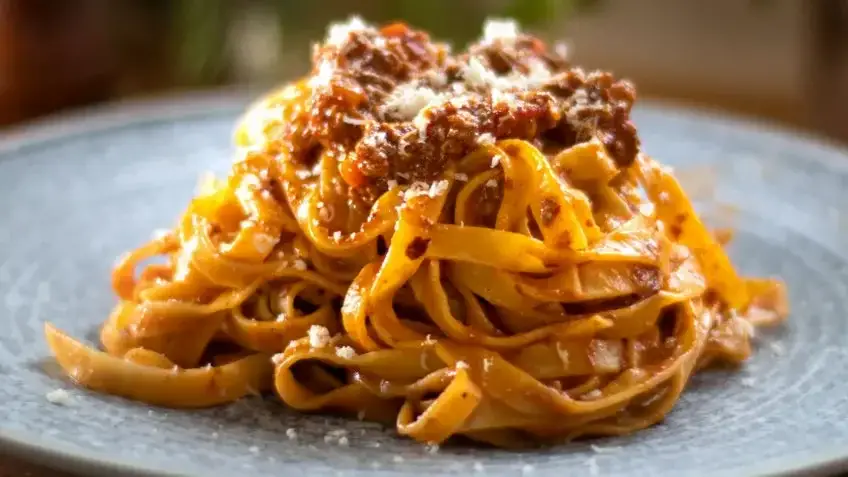
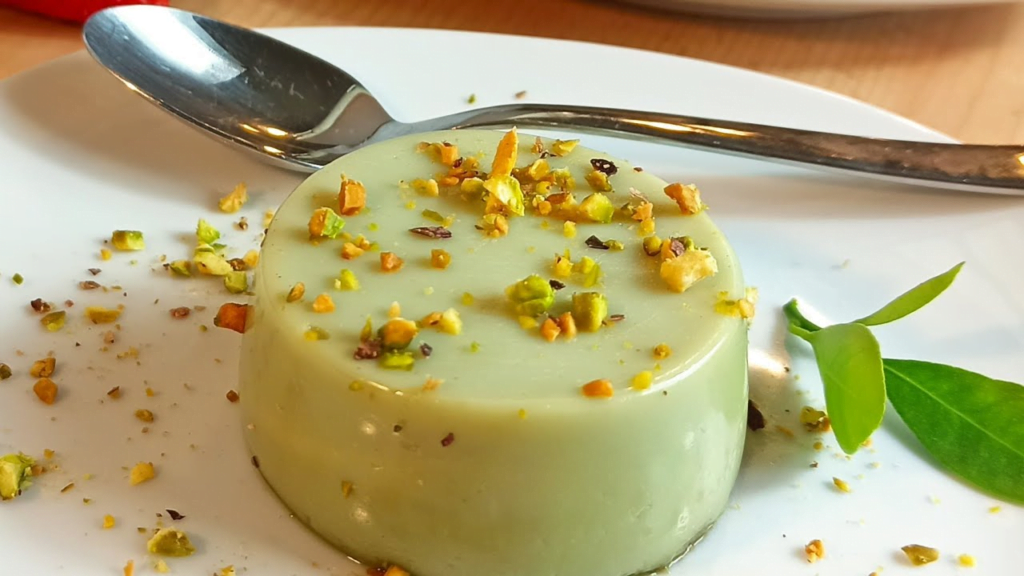
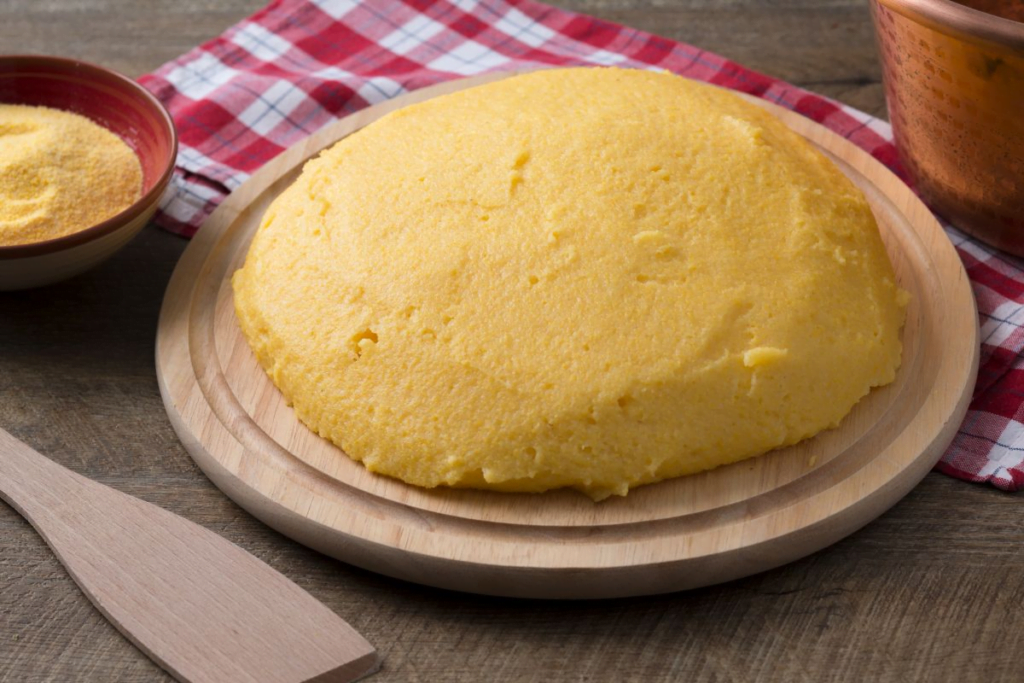
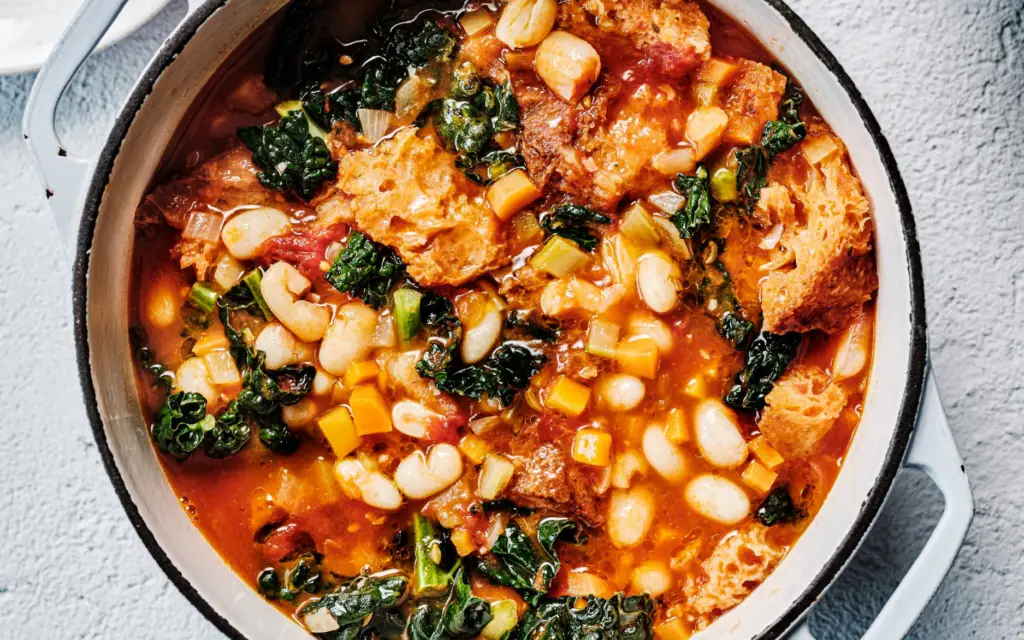



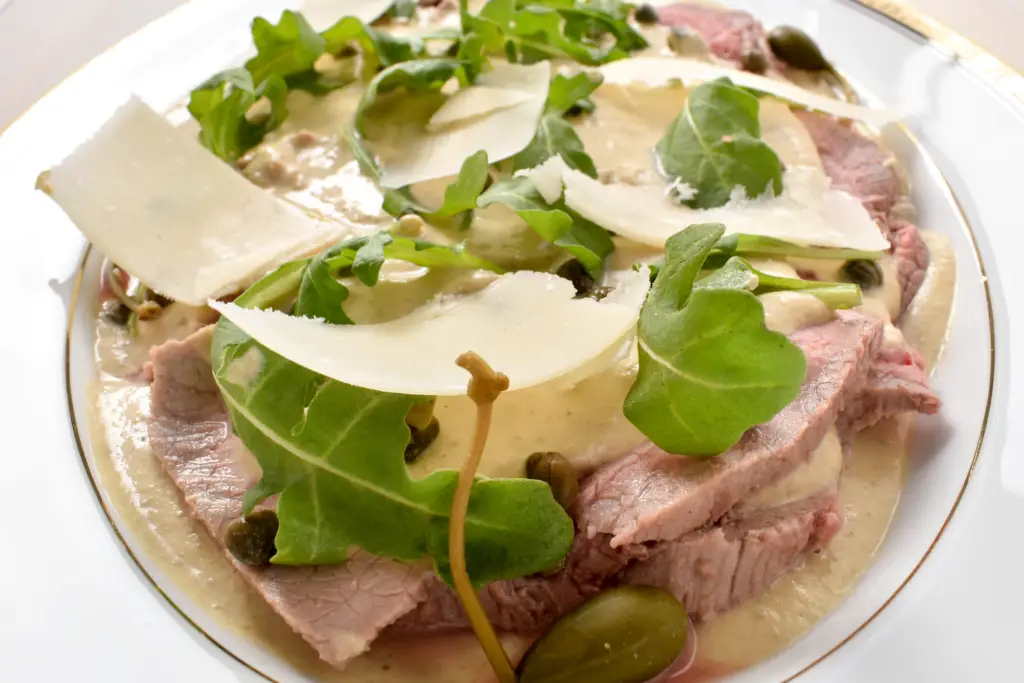
Interesting Facts About Italy
Italy’s rich history, cultural contributions, and culinary delights make it a country filled with intriguing and delightful facts.
The Leaning Tower of Pisa Isn’t Alone
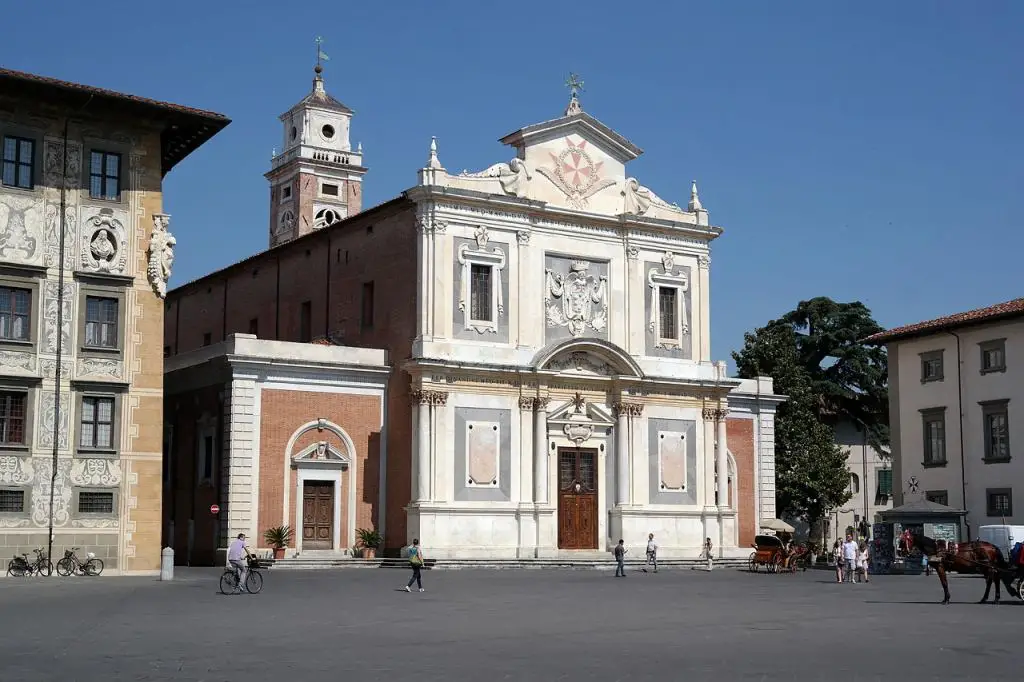
The Leaning Tower of Pisa is not the only tilting structure in Italy. The church of Santo Stefano dei Cavalieri and the church of San Michele degli Scalzi, both located in Pisa, also have a noticeable tilt.
Birthplace of Pizza Margherita
Naples, Italy, is credited as the birthplace of the iconic Pizza Margherita. Legend has it that in 1889, the pizza was created to honor Queen Margherita of Savoy, featuring tomatoes, mozzarella, and basil to represent the colors of the Italian flag.
Venice, the Floating City

Venice is built on a network of canals, and interestingly, the city itself is slowly sinking. To counteract this, the Italian government has implemented measures to try and preserve this unique city.
A Fountain of Wine
In the town of Marino, they celebrate the Sagra dell’Uva festival where a fountain flows with free red and white wine. Locals and tourists alike can fill their glasses during this wine-spouting spectacle.
The First Pizzeria

Antica Pizzeria Port’Alba in Naples is considered the world’s first pizzeria, dating back to 1738. It still serves traditional Neapolitan pizza to this day.
A Mosaic Country
Italy has the highest number of UNESCO World Heritage Sites, boasting a rich cultural and historical heritage. From the Colosseum to the historic center of Rome, the country is a treasure trove of significant sites.
The Vatican City, the World’s Smallest Country

The Vatican City is not only the smallest independent state globally but also the smallest country by both area and population. It is an independent city-state enclaved within Rome, Italy.
Long Living Citizens

Italy has one of the highest life expectancies in the world. The secret might lie in the Mediterranean diet, known for its emphasis on fresh fruits, vegetables, olive oil, and a moderate intake of wine.
Invention of the Espresso Machine
The modern espresso machine, an integral part of coffee culture worldwide, was invented in Italy by Angelo Moriondo in 1884. This laid the foundation for the country’s strong coffee tradition.
The Venice Film Festival
Established in 1932, the Venice Film Festival is the oldest film festival in the world. It takes place annually on the island of the Lido in Venice, showcasing a wide array of international films.
Italy’s History and the Effect It Has Had on the Cuisine
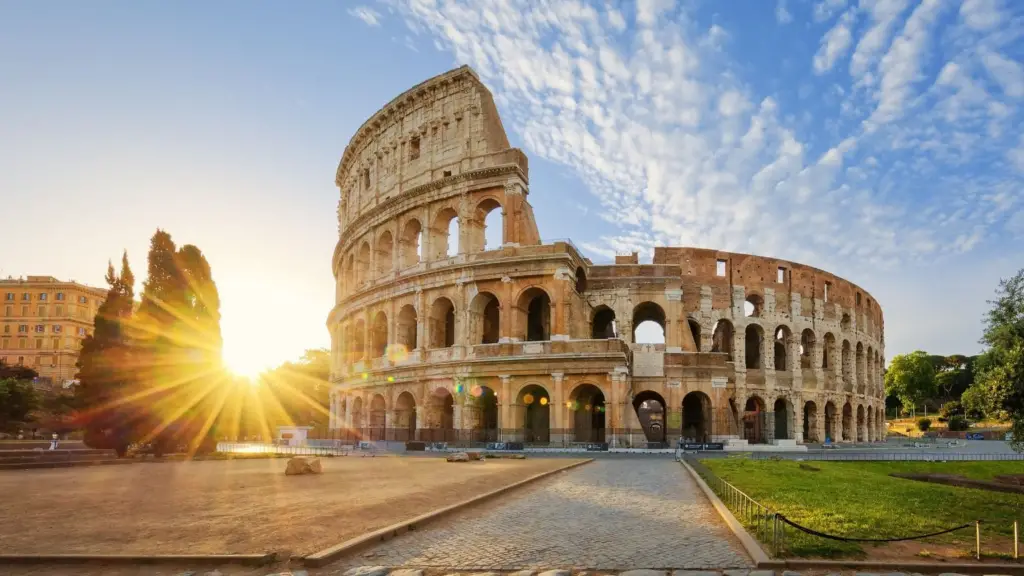
Imagine yourself reclining on a plush Roman couch, indulging in a lavish feast while discussing philosophy with Cicero. Or strolling through a bustling Renaissance market, your senses intoxicated by the aroma of spices and citrus fruits.
Italian cuisine isn’t just about delicious food; it’s a captivating journey through time, a rich tapestry woven from historical threads.
Roman Revelry: A Banquet of Innovation
Back in the days of the Roman Empire, food wasn’t just sustenance; it was a spectacle. Grand banquets were culinary playgrounds, where new dishes were born and flavors danced on the tongues of emperors and philosophers alike.
This is where the art of pasta-making blossomed, and exotic spices and herbs found their way onto Roman plates, leaving their mark on Italian cuisine forever.
Arabian Alchemists: Spices and Sweets from the East (The Early Middle Ages)
Fast forward to the Middle Ages, when Arab influences swirled across the Mediterranean, leaving their mark on the southern shores of Italy. Sicilian cuisine was especially transformed, embracing rice, citrus fruits, and the golden magic of saffron.
These fragrant additions added depth and complexity to Italian dishes, forever enriching the culinary landscape.
Renaissance Rumblings: Forks and Flavors Across Borders (Early Modern Era)
The Renaissance wasn’t just about painting and poetry; it was a renaissance of the table as well!

Catherine de’ Medici, a fiery Italian queen who married the French king, brought with her a taste of Italy, influencing French cuisine and introducing the revolutionary fork (yes, Italians were 300 years ahead of the curve!).
This era also saw the rise of chilled drinks, a cool innovation that’s still savored today.
Regional Revolution: Pizza, Pasta, and Beyond (19th century)
With the unification of Italy in the 19th century, regional specialties took center stage. Neapolitan pizza, oozing with mozzarella, and Bolognese sauce, rich and meaty, became national icons. Every region boasted its own culinary treasures, from Sicilian cannoli to Tuscan truffles, celebrating local ingredients and reflecting the diverse tapestry of Italian culture.
Global Gastronomy: Sharing the Italian Dream
Today, Italian cuisine is a global phenomenon. Pizza, pasta, and gelato conquer taste buds worldwide, a testament to the enduring appeal of Italian flavors.
But innovation hasn’t stopped! Chefs like Massimo Bottura and Gennaro Contaldo continue to push boundaries, reinterpreting tradition with modern flair.
Unwrap the Flavorful Layers
This is just a glimpse into the captivating story of Italian cuisine. Each bite holds a whisper of history, a fusion of cultures, and a testament to Italy’s vibrant spirit. So, grab your fork, dive deeper into the regional specialties, and discover the secrets that have kept Italian cuisine at the forefront of the culinary world for centuries!
References
How the Location, Geography and Climate has Affected Italian Cuisine
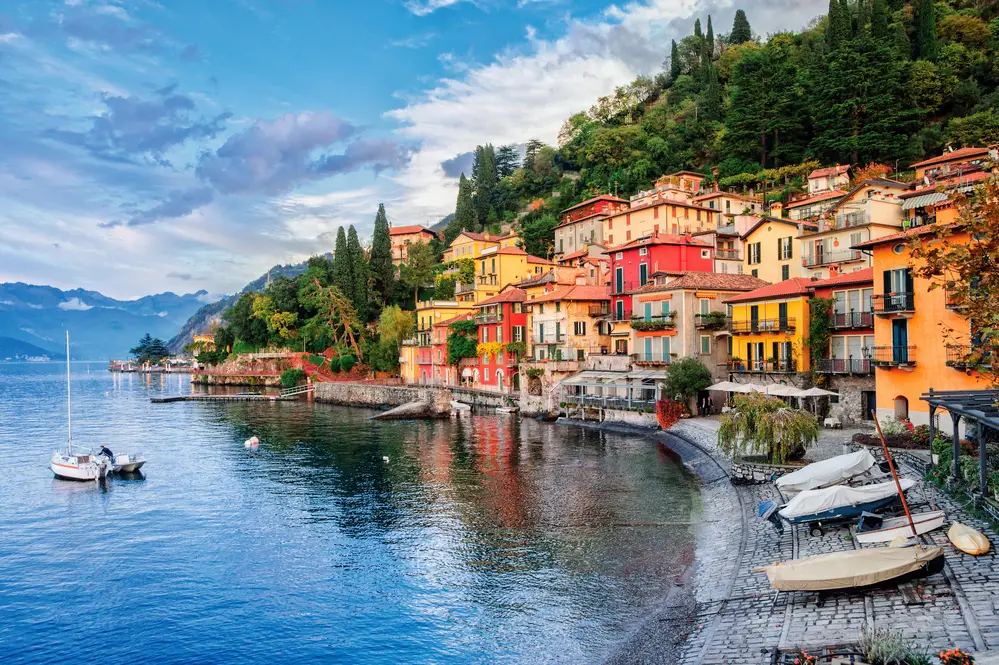
Imagine biting into a fresh arrosticino – skewered, juicy lamb from Abruzzo’s sun-drenched hills. Or savoring Fontina cheese fondue, its richness echoing the alpine charm of Aosta Valley. Italian cuisine isn’t just delicious; it’s a journey through diverse landscapes, climates, and history, reflected on every plate.
Nature’s Bounty
From the snow-capped Alps to the sun-kissed Mediterranean, Italy’s geography is a culinary playground. Each region boasts unique treasures:
- Mediterranean Magic: Warmth fosters olives, grapes, citrus fruits, and the heartthrob of Italian kitchens – the tomato. Imagine fresh spaghetti alle vongole with clams bathed in sunshine-perfected sauce.
- Mountainous Riches: Head north to Aosta Valley for Fontina cheese fondue, a creamy embrace in chilly alpine air.
- Coastal Delights: Abruzzo’s Adriatic coast offers monkfish tripe and mussels with saffron, seafood’s ode to the sparkling sea.
A Region, a Symphony of Flavors:
Imagine Italy as a mosaic of 20 regions, each singing its own culinary aria:
- Tuscany: Rolling hills whisper of Chianti wine, ribollita warming your soul, and the legendary bistecca alla Fiorentina.
- Campania: Naples beckons with the iconic Neapolitan pizza, creamy mozzarella di bufala, and the zesty kick of penne all’arrabbiata.
- Sicily: A taste of North Africa lingers in caponata, fried delights like arancini, and cassata, an ice-cream cake with Arabic ancestry.
History’s Culinary Whispers:
Italian cuisine is a tapestry woven with threads from Greece, distant lands, and Marco Polo’s spice-laden journeys. Each ingredient tells a story:
- Pasta: A gift from the East, it has become the soul of Italian cooking, from creamy carbonara to light and vibrant caprese salad.
- Spices: A sprinkle of cinnamon or star anise hints at trade routes and cultural exchanges that enriched Italian flavors.
Your Personalized Food Adventure:
Exploring Italian cuisine by region is a journey through centuries of taste and tradition. Discover hidden gems, regional specialties, and the stories behind each dish. So, grab your virtual fork, dive into this delicious adventure, and let Italy’s diverse flavors enchant your senses!
References
- britannica.com
- dotravel.com
- sites.psu.edu
- italyirl.com
- lacucinaitaliana.com
- prezi.com
- lifeinitaly.com
- mamalovesitaly.com
What Makes Italian Food So Interesting?
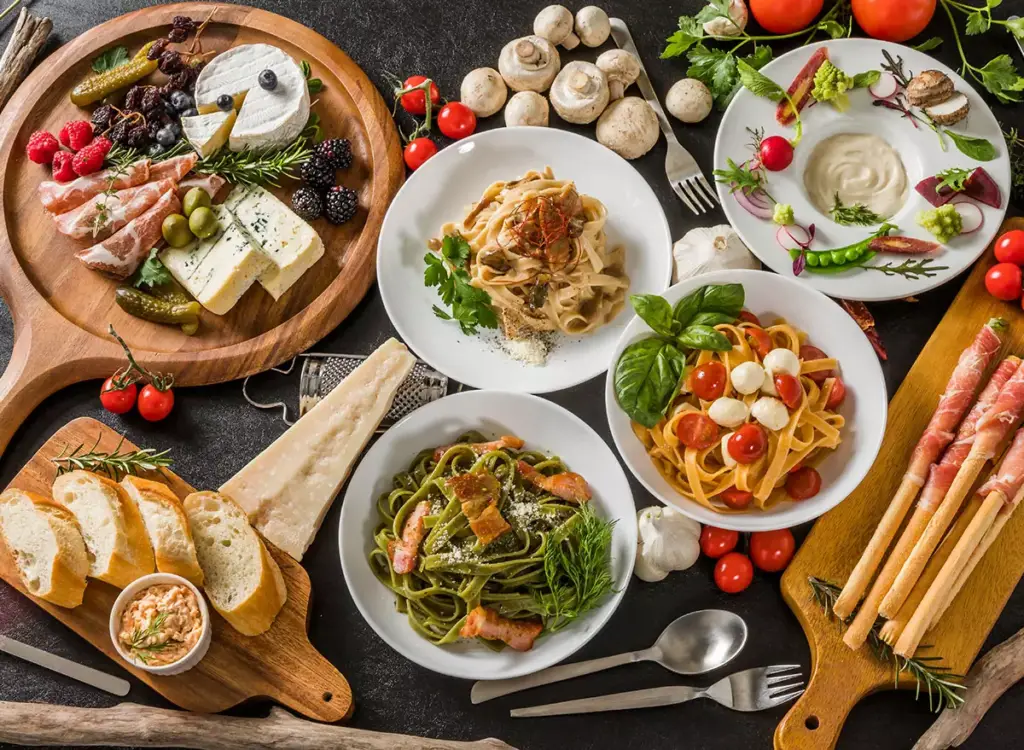
At the heart of traditional Italian food lies a set of core principles and techniques that are key to creating the unique flavors and textures that define it. For us, exploring Italy’s national dish means uncovering these secrets and learning about the importance of fresh ingredients, regional variations, and the art of simplicity in Italian cooking.
One of the most significant elements of authentic Italian food is the focus on using fresh, seasonal ingredients. Italians take pride in sourcing the best possible produce and ingredients, and this emphasis on quality is evident in the vibrant colors, rich aromas, and flavors of their cuisine.
Regional Variations and Local Specialties
Another principle of traditional Italian cooking is the use of regional variations and local specialties. The diversity of Italian cuisine is a result of its various regions, each with its own unique culinary traditions and ingredients.
From the coastal seafood dishes of Southern Italy to the hearty meat-based cuisine of Tuscany, exploring Italy’s regional cuisine offers a fascinating insight into Italy’s culinary heritage.
Finally, the art of simplicity is central to Italian cooking. Traditional Italian dishes typically use just a few key ingredients, allowing each flavor to shine through. This approach to cooking highlights the quality and freshness of the ingredients, rather than relying on complex techniques or heavy seasoning to create flavor.
So, whether you’re indulging in a classic pasta dish or savoring a regional specialty, understanding the secrets of authentic Italian cuisine is the key to appreciating the full flavor and richness of this culinary treasure.
Understanding the Essence of Italian Cuisine

Italian food is characterized by its simplicity, with many dishes having only four to eight ingredients. Italians pride themselves on the quality of their ingredients rather than on elaborate preparation. Dishes and recipes are often created by grandmothers rather than chefs, which makes many Italian dishes truly homemade.
The essence of Italian food is its regional diversity and reliance on seasonal produce. From the truffles of Piedmont to the citrus of Sicily, each region has its own specialties.
The key is balance, with each ingredient allowed to shine without overwhelming the others. This balance extends to the structure of the meal itself, with a typical Italian meal including several courses designed to complement each other in flavor and texture.
Italian Culinary Traditions
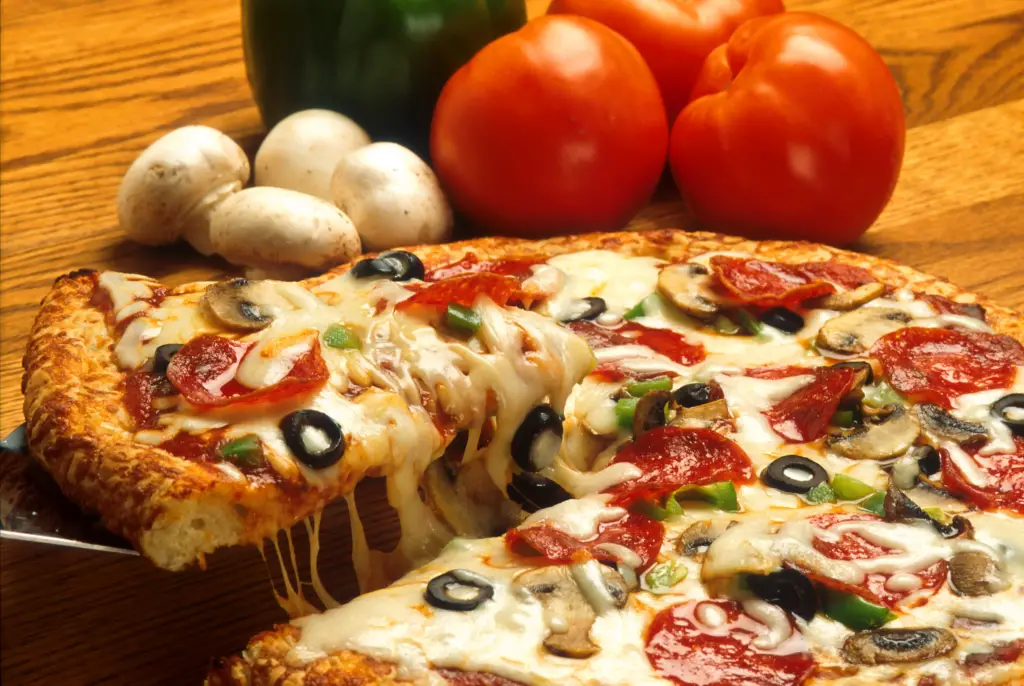
Italian culinary traditions are deeply rooted in the country’s regional cultures and history. The tradition of the family meal is central to Italian life, with recipes and techniques passed down through generations.
Each region has its own traditional Italian Food dishes, such as polenta in the North, pizza in Naples, and seafood in the coastal regions.
Pasta, a staple of Italian cuisine, varies in shape, size, and texture from region to region, with each type designed to hold sauces in a particular way.
The tradition of the aperitivo, where small dishes are served with drinks before the main meal, showcases Italy’s love of socializing and its belief in the importance of food as a way to bring people together.
Exploring the Italian Food Ingredients: The Flavors of Italy

Italian cuisine is a celebration of the country’s rich array of local ingredients. The Mediterranean climate provides an abundance of fresh vegetables, fruits, and herbs, which are the cornerstone of Italian cooking.
Key Italian Food ingredients include:
- Olive Oil: Used in almost every Italian dish, it varies in flavor and color from region to region.
- Tomatoes: Whether fresh or turned into sauce, tomatoes are a fundamental component of many Italian dishes.
- Cheese: Italy produces a wide variety of cheeses, from the hard Parmigiano-Reggiano to the soft buffalo mozzarella.
- Pasta: A staple of Italian cuisine, each region has its own preferred shapes and sizes.
- Meats and Fish: Prosciutto di Parma, salami, and an array of seafood are central to Italian cuisine.
- Herbs: Basil, oregano, rosemary, and sage are commonly used to flavor dishes.
- Wine and Vinegar: Italian cooking features a variety of wines and balsamic vinegar to enhance the flavors of the food.
These Italian Food ingredients are used with a philosophy of simplicity, allowing the natural flavors to stand out, creating dishes that are both comforting and refined.
What is Italy’s National Dish?
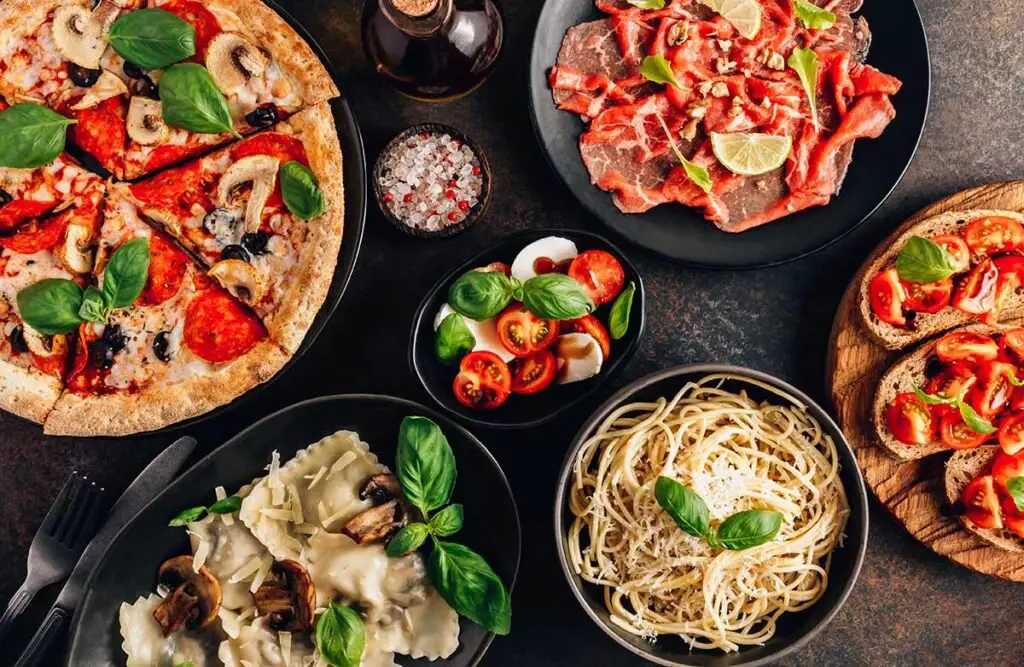
When we think of popular Italian recipes, a few classic dishes come to mind: pizza, lasagna, spaghetti with meatballs, and more.
These iconic Italian dishes have not only become famous in their home country but also all over the world. But what makes these dishes so significant?
In Tuscany, you can find the famous Bistecca alla Fiorentina, a grilled steak that is seasoned simply with olive oil, salt, and pepper.
These famous Italian dishes have become an integral part of Italian culture in much the same way as some monuments and artworks. They are not just mere dishes; they have become emblems of Italy’s cultural identity, values, and history. Their popularity has allowed these dishes to spread worldwide, promoting Italian cuisine and culture.
“The popularity of Italy’s national dish has made these dishes an integral part of Italian culture in much the same way as some monuments and artworks.”
Indeed, the significance of Italy’s national dish goes beyond food alone. It is a symbol of community, family, and shared experiences. Many Italian families gather around the table to enjoy these classical dishes some of which have been passed down through generations. Thus, iconic Italian dishes offer a way to connect with Italian traditions and history, creating a sense of belonging and pride.
Traditional Italian Cuisine: A Culinary Celebration
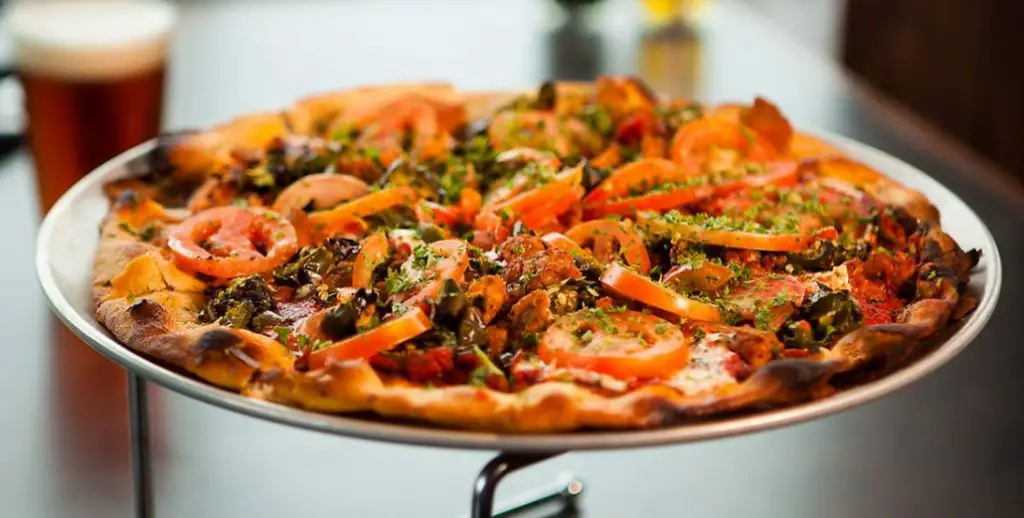
When it comes to traditional dishes from Italy, the variety and richness are unparalleled. Each region of Italy boasts its own unique culinary specialties, making Italian cuisine diverse and fascinating.
One of the most famous traditional Italian meals is the Neapolitan pizza. This classic dish originated in Naples and has become a global sensation. The crust is crispy and thin, the tomato sauce is sweet and tangy, and the mozzarella cheese is melted to perfection.
Italian Food – International Favorites
Another iconic dish is the lasagna, which is a layered pasta dish with béchamel sauce, meat, and tomato sauce. It’s a staple in Italian cuisine and is usually served for special occasions.
The risotto is a creamy rice dish that comes in numerous variations, using ingredients such as mushrooms, seafood, saffron, or asparagus. It’s a typical dish in Northern Italy and is known for its rich flavor and comforting texture.
The carbonara is a pasta dish that originated in Rome in the mid-20th century. The sauce consists of eggs, Pecorino Romano cheese, guanciale (or pancetta), and black pepper. This dish has become a quintessential representation of Italian comfort food.
Italian Cuisine – Regional Specialties
Aside from the classic Italian dishes that have gained popularity worldwide, each one of the 20 unique regions has its own unique traditional dishes to savor. For example, Sicily is known for their arancini, which are deep-fried rice balls filled with meat and tomato sauce.
Tuscany has the bistecca alla fiorentina, a grilled steak served with roasted rosemary potatoes. And in Venice, you can indulge in fegato alla veneziana, a liver and onion dish that is typical of the region.
Italian cuisine is also famous for its antipasti, which are small dishes served before the main course. These can include bruschetta, caprese salad, or cured meats such as prosciutto and salami.
Whether you’re exploring the regional specialties or indulging in the classic Italian dishes, traditional dishes from Italy offer a culinary celebration that will leave you satisfied and yearning for more.
The Best Italian Food – A Gastronomic Delight

Italian Food is celebrated the world over for its rich and diverse flavors that are a testament to the country’s culinary legacy. It’s no surprise that some of the best Italian dishes are also among the most popular.
From classic pasta recipes to decadent desserts, we’ve rounded up the top must-try delicacies that showcase the essence of classic Italian cuisine.
| Dish | Description |
|---|---|
| Linguine alle Vongole | This classic dish features linguine pasta with fresh clams, garlic, white wine, and olive oil. It’s a seafood lover’s dream. |
| Osso Buco alla Milanese | A rich and hearty dish made with braised veal shanks in a savory tomato sauce. It’s traditionally served with risotto or polenta. |
| Spaghetti Carbonara | This beloved pasta dish is made with spaghetti, pecorino cheese, pancetta, eggs, and black pepper. The result is a creamy and indulgent pasta that is a true comfort food. |
| Tiramisu | This classic Italian dessert is a perfect blend of coffee, cream, and ladyfingers. It’s no wonder that it’s one of Italy’s most famous exports. |
These are just a few examples of the best Italian dishes that you simply can’t miss. Of course, there are countless other Italian recipes and dishes that are equally delicious and worth trying. The beauty of Italian cuisine is in its variety and versatility, so don’t be afraid to explore and discover new flavors and dishes.
At the heart of classic Italian cuisine is a focus on quality ingredients, simple preparation, and bold flavors. This makes Italian food not only delicious but also healthy and nourishing.
So, whether you’re indulging in a bowl of pasta or savoring a decadent dessert, you can rest assured that you’re enjoying a culinary masterpiece that has stood the test of time.
What is the Most Famous Italian Pasta Dish?
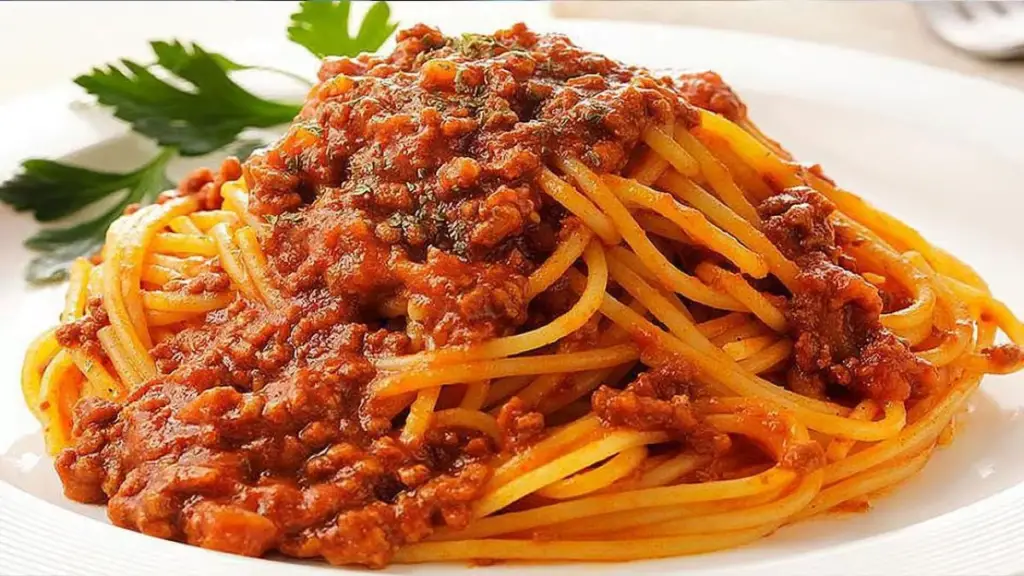
The most famous Italian pasta dish is likely “Spaghetti Bolognese” or “Spaghetti alla Bolognese.” However, it’s important to note that Spaghetti Bolognese, a pasta dish with a meat-based sauce originating from Bologna, Italy, is not as commonly consumed in Italy as it is outside the country.
In Italy, traditional Bolognese sauce, known as “Ragù alla Bolognese,” is typically served with tagliatelle, a broad, flat pasta, rather than spaghetti.
Other immensely popular pasta dishes include “Spaghetti Carbonara,” “Fettuccine Alfredo,” “Linguine alle Vongole” (Linguine with Clams), and “Lasagna.” Each region in Italy has its own signature pasta dishes, contributing to the rich and diverse Italian pasta culinary landscape.
What Food is Most Eaten in Italy?

Italy is renowned for its diverse and delicious cuisine, and the most commonly consumed foods vary across regions. However, some staples are widely enjoyed throughout the country. Here are a few:
- Pasta: Italians have an incredible variety of pasta dishes, ranging from classic Spaghetti Bolognese to regional specialties like Orecchiette with broccoli rabe in the south or Trofie al Pesto in Liguria.
- Pizza: A global favorite, pizza originated in Naples, Italy. Classic choices include Margherita with tomato, mozzarella, and basil, or Marinara with tomato, garlic, oregano, and olive oil.
- Bread and Olive Oil: Bread is a fundamental part of Italian meals, often served with high-quality olive oil for dipping.
- Cheese: Italy is famous for its cheeses, such as Parmesan, Mozzarella, Gorgonzola, and Pecorino. Cheese is commonly used in various dishes and enjoyed on its own.
- Tomatoes: Tomatoes are a key ingredient in Italian cuisine, featuring prominently in sauces, salads, and various dishes.
- Wine: With a rich winemaking tradition, wine is an integral part of Italian meals. Different regions produce diverse wines to complement local dishes.
- Seafood: Coastal regions, like Sicily and Campania, are known for their seafood dishes, such as Risotto ai Frutti di Mare and Spaghetti alle Vongole.
- Espresso: Italians love their coffee, and a shot of espresso is a common way to end a meal.
It’s important to note that Italian cuisine is incredibly diverse, and each region has its own specialties. The emphasis is often on fresh, high-quality ingredients and simple preparation that lets the flavors shine.
How Healthy is Italian Food?

Forget bland diets and restrictive rules! Italian cuisine isn’t just about mouthwatering flavors; it’s a delicious path to healthy living. Let’s delve into the secrets behind its health benefits and explore the well-being mosaic of the Italian population.
Fueling Your Body, Italian Style
Weight Management Maestro
Fresh fruits and vegetables, the stars of traditional Italian cooking, are low in calories and packed with nutrients. Balanced meals and mindful portion control, hallmarks of the Mediterranean diet, contribute to healthy weight management, even aiding in weight loss.
Fiber Fiesta
Whole grains, legumes, and nuts, staples in Italian kitchens, are fiber powerhouses. This dietary hero supports your gut health, keeps blood sugar levels stable, and reduces cholesterol, promoting overall well-being.
Happy Heart Hero
Olive oil, the golden thread of Italian cooking, is brimming with healthy monounsaturated fats. Omega-3 fatty acids from the seafood Italians love further to safeguard your heart. Plus, a moderate glass of red wine enjoyed with a meal may offer additional heart-protective benefits.
Antioxidant Armory
Think fruits, vegetables, and whole grains – the antioxidant champions of Italian cuisine! Vitamins A, C, and E, along with lycopene and beta-carotene, shield your cells and offer potential protection against cancer.
Beyond the Plate: A Look at Italian Well-being
- Longevity Legacy: Italians boast an impressive life expectancy, averaging 83.6 years as of 2019, a testament to their healthy lifestyle.
- Health Habits Matter: The choices we make significantly impact our health. While the COVID-19 pandemic had a temporary impact on life expectancy, overall, about 41.2 million Italians report having good general health.
- Regional Rhythms of Health: Just like flavors vary across the peninsula, so do health outcomes. Sicily’s unique cuisine, influenced by North Africa, offers different benefits compared to Tuscany’s emphasis on fresh ingredients and heart-healthy olive oil. And of course, Campania, the home of Neapolitan pizza and pasta, has its own story to tell.
The Final Flavorful Note
Mindful preparation unlocks the health potential of Italian cuisine. The Italian population enjoys the gift of longevity, but remember, individual choices and regional variations play a crucial role.
So, explore the diverse culinary landscape of Italy, not just for the taste, but also for the health benefits each region offers. Buon appetito and buona salute!
References
- healthfully.com
- eurohealthobservatory.who.int
- statista.com
- eurohealthobservatory.who.int
- oecd.org
- denicolasitaliandining.com
- webmd.com
Timeless Italian Cuisine – 22 Delicious Recipes you can Try at Home
When it comes to Italian cuisine, there are several dishes that have gained worldwide popularity for their unique and flavorful taste. Here are 22 of the most popular Italian recipes that you should definitely try:
Italian Food – Bistecca Alla Fiorentina

The Rich Heritage of Bistecca Alla Fiorentina
In the heart of Tuscany, Italy, lies a culinary treasure known as Bistecca Alla Fiorentina. This traditional Tuscan dish boasts a history as robust as its flavors. Originating from Florence, this iconic recipe reflects the region’s dedication to high-quality, simple ingredients.
Tuscan cuisine, celebrated for its emphasis on fresh, local produce, makes Bistecca Alla Fiorentina a true embodiment of the flavors of Italy.
Italian Food – Bistecca Alla Fiorentina Ingredients:
- 2 thick-cut T-bone steaks (about 2 inches thick)
- 4 tablespoons extra-virgin olive oil
- 4 cloves garlic, minced
- 2 sprigs of fresh rosemary
- Salt and black pepper to taste
- Lemon wedges for serving
Italian Food – Bistecca Alla Fiorentina Recipe:
1. Prepare the Steaks:
- Take the T-bone steaks out of the refrigerator and let them come to room temperature for about 30 minutes.
- Preheat your grill or grill pan to high heat.
2. Seasoning:
- Rub the steaks with olive oil, ensuring a generous coating.
- Sprinkle minced garlic, fresh rosemary, salt, and black pepper on both sides of the steaks, pressing the seasonings into the meat.
3. Grilling:
- Place the steaks on the hot grill and cook for about 5-7 minutes on each side for medium-rare, adjusting the time based on your desired doneness.
- Use a meat thermometer to check for doneness – the internal temperature should be around 130°F (54°C) for medium-rare.
4. Resting:
- Once done, remove the steaks from the grill and let them rest for at least 10 minutes. This allows the juices to redistribute, ensuring a juicy and flavorful bite.
5. Serve:
- Slice the steaks against the grain and arrange them on a platter.
- Serve with lemon wedges on the side for a burst of freshness.
Serves: 4 people
Estimated Cooking Time:
20-25 minutes (including resting time)
Nutritional Information (Per Serving):
- Calories: 450 kcal
- Protein: 40g
- Fat: 30g
- Carbohydrates: 0g
- Fiber: 0g
Indulge in the savory charm of Tuscany with Bistecca Alla Fiorentina, a dish that pays homage to the rich culinary heritage of the region. Buon appetito!
Italian Food – Fegato Alla Veneziana

A Culinary Journey to Venice: Fegato Alla Veneziana
Embark on a culinary escapade to the enchanting city of Venice with the exquisite Fegato Alla Veneziana. This classic Italian dish has deep roots in Venetian history and showcases the region’s flair for simple, yet incredibly flavorful, cuisine.
Dating back centuries, Fegato Alla Veneziana perfectly captures the essence of Venetian gastronomy with its emphasis on fresh, local ingredients and a harmonious blend of flavors.
Italian Food – Fegato Alla Veneziana Ingredients:
- 1 lb calf liver, thinly sliced
- 2 large onions, thinly sliced
- 4 tablespoons unsalted butter
- 4 tablespoons extra-virgin olive oil
- 1/2 cup dry white wine
- Salt and black pepper to taste
- Fresh parsley, chopped, for garnish
- Lemon wedges for serving
Italian Food – Fegato Alla Veneziana Recipe:
1. Prepare the Liver:
- Season the thinly sliced calf liver with salt and black pepper on both sides.
2. Sauté Onions:
- In a large pan, melt butter and olive oil over medium heat.
- Add thinly sliced onions and cook until they become golden and caramelized.
3. Cook the Liver:
- Push the onions to the side of the pan and place the seasoned liver slices.
- Cook the liver for 2-3 minutes on each side until browned but still slightly pink inside.
4. Deglaze with Wine:
- Pour dry white wine into the pan, scraping any browned bits from the bottom for added flavor.
- Let it simmer for a couple of minutes, allowing the alcohol to evaporate.
5. Garnish and Serve:
- Sprinkle fresh chopped parsley over the liver and onions.
- Serve Fegato Alla Veneziana hot, accompanied by lemon wedges on the side.
Serves: 4 people
Estimated Cooking Time:
20-25 minutes
Nutritional Information (Per Serving):
- Calories: 380 kcal
- Protein: 20g
- Fat: 28g
- Carbohydrates: 10g
- Fiber: 2g
Immerse yourself in the flavors of Venice with Fegato Alla Veneziana, where each bite tells a story of culinary mastery from the heart of Italy. Buon viaggio culinario!
Italian Food – Bruschetta

A Taste of Italy: Exploring Bruschetta’s Roots
Embark on a culinary journey to the heart of Italy with the iconic Bruschetta. Originating from the sun-kissed landscapes of Tuscany, this dish captures the rustic allure and rich history of the region.
With a heritage dating back centuries, Bruschetta has evolved from humble beginnings into a global sensation, embodying the passion and simplicity of Italian cuisine.
Italian Food – Bruschetta Ingredients:
- 6 ripe tomatoes, diced
- 1 baguette, sliced
- 3 cloves garlic, minced
- 1/4 cup extra-virgin olive oil
- 1/4 cup fresh basil, chopped
- 1/2 teaspoon salt
- 1/4 teaspoon black pepper
Italian Food – Bruschetta Recipe:
Prepare the Tomatoes
- Dice the ripe tomatoes into small, even pieces.
Toast the Baguette
- Slice the baguette into 1/2-inch thick pieces.
- Toast the baguette slices until golden brown.
Create the Tomato Mixture
- In a bowl, combine diced tomatoes, minced garlic, chopped basil, olive oil, salt, and pepper.
- Mix the ingredients thoroughly.
Assemble the Bruschetta
- Spoon the tomato mixture generously onto each toasted baguette slice.
Serve and Enjoy
- Arrange the Bruschetta on a platter.
- Serve immediately and savor the flavors of Italy!
Serves: 4-6 people
Estimated Cooking Time: 20 minutes
Nutritional Information (per serving):
- Calories: 180
- Fat: 9g
- Carbohydrates: 22g
- Protein: 4g
Italian Food – Caprese Salad

A Culinary Voyage: Unraveling the Caprese Salad
History and Background:
Italy, a haven for gastronomic delights, introduces us to the iconic Caprese Salad. Originating from the enchanting island of Capri in the Campania region, this salad is a celebration of simplicity and freshness.
The story dates back to the early 20th century when local farmers crafted this masterpiece as a tribute to the colors of the Italian flag – red, green, and white. Each bite echoes the sun-soaked fields and coastal breeze of Capri, encapsulating the essence of Italian cuisine.
Ingredients:
- 4 large tomatoes, sliced
- 250g fresh mozzarella, sliced
- Fresh basil leaves
- Extra-virgin olive oil
- Balsamic glaze (optional)
- Salt and pepper to taste
Recipe:
Arrange Tomatoes and Mozzarella
- Slice the tomatoes into 1/4-inch thick rounds.
- Slice the fresh mozzarella into similar-sized rounds.
Assemble the Salad
- Alternate tomato and mozzarella slices on a serving platter.
- Tuck fresh basil leaves between the tomato and mozzarella slices.
Drizzle with Olive Oil
- Generously drizzle extra-virgin olive oil over the assembled salad.
Season and Garnish
- Sprinkle salt and pepper to taste.
- Optionally, add a drizzle of balsamic glaze for extra flavor.
Serve and Delight
- Serve immediately to enjoy the freshness and flavors.
Serves: 4 people
Estimated Cooking Time: 10 minutes
Nutritional Information (per serving):
- Calories: 200
- Fat: 15g
- Carbohydrates: 5g
- Protein: 12g
Immerse yourself in the allure of Italy with this vibrant Caprese Salad – a culinary masterpiece that transcends time and place.
Italian Food – Neapolitan Pizza

Discovering the Essence of Neapolitan Pizza: A Culinary Expedition
History and Background:
Italy’s soul resides in its Neapolitan Pizza, an ancient culinary artistry originating from Naples. Dating back to the 18th century, the pizza was a street food sensation among Naples’ working-class citizens. The Margherita Pizza, a Neapolitan classic, was created in honor of Queen Margherita of Savoy in 1889.
Today, Neapolitan Pizza holds the prestigious title of UNESCO Intangible Cultural Heritage, a testament to its rich history and cultural significance.
Italian Food – Neapolitan Pizza Ingredients:
- 2 1/4 teaspoons active dry yeast
- 1 1/2 cups warm water
- 3 1/2 cups Italian “00” flour
- 2 teaspoons salt
- 2 tablespoons extra-virgin olive oil
- 1 cup San Marzano tomato sauce
- Fresh mozzarella cheese
- Fresh basil leaves
Italian Food – Neapolitan Pizza Recipe:
Activate the Yeast
- Dissolve yeast in warm water and let it sit for 5 minutes.
Prepare the Dough
- Combine flour and salt in a bowl.
- Make a well in the center and add yeast mixture and olive oil.
- Mix until a dough forms. Knead for 8-10 minutes.
Rise and Rest
- Place the dough in an oiled bowl.
- Cover and let it rise for 1-2 hours.
- Divide the dough into two portions.
Shape and Top the Pizza
- Preheat the oven and a pizza stone to 500°F (260°C).
- Roll out each dough portion.
- Spread tomato sauce, fresh mozzarella, and basil.
Bake to Perfection
- Transfer the pizza to the preheated stone.
- Bake for 10-12 minutes or until crust is golden.
Serves: 4 people
Estimated Cooking Time: 2 hours (including dough rising)
Nutritional Information (per serving):
- Calories: 350
- Fat: 12g
- Carbohydrates: 45g
- Protein: 15g
Embark on a journey through Naples with this Neapolitan Pizza recipe, where tradition and flavor collide in each delightful slice. Buon viaggio!
Italian Food – Polenta

Exploring the Rich Heritage of Polenta: A Culinary Odyssey
History and Background:
Italy’s Northern Gem: Polenta, a staple in Northern Italian cuisine, boasts a rich history dating back to Roman times. Originating in the northern regions, particularly Veneto, Lombardy, and Friuli-Venezia Giulia, polenta has evolved from a humble peasant dish to a versatile culinary delight.
Traditionally made from ground yellow corn, polenta reflects the rustic simplicity and agricultural roots of Northern Italy.
Italian Food – Polenta Ingredients:
- 1 cup coarse yellow cornmeal
- 4 cups water
- 1 teaspoon salt
- 2 tablespoons unsalted butter
- 1/2 cup grated Parmesan cheese
Italian Food – Polenta Recipe:
Prepare the Polenta
Ingredients:
- 1 cup coarse yellow cornmeal
- 4 cups water
- 1 teaspoon salt
Instructions:
- Boil water in a large pot.
- Add salt and gradually whisk in cornmeal.
- Reduce heat to low and cook, stirring frequently, for 30-40 minutes.
Add Butter and Cheese
Ingredients:
- 2 tablespoons unsalted butter
- 1/2 cup grated Parmesan cheese
Instructions:
- Stir in butter and Parmesan cheese until well combined.
- Continue cooking for an additional 5 minutes.
Serve and Enjoy
- Remove from heat and let it sit for a few minutes.
- Spoon onto plates and serve warm.
Serves: 4 people
Estimated Cooking Time: 45 minutes
Nutritional Information (per serving):
- Calories: 220
- Fat: 10g
- Carbohydrates: 30g
- Protein: 5g
Northern Italy on Your Plate: Transport yourself to the charming landscapes of Northern Italy with this comforting polenta recipe, embodying the warmth and heartiness of Italian home cooking. Buon appetito!
Italian Food – Ribollita

A Taste of Tuscany: Unveiling the Tale of Ribollita
History and Background:
Tuscan Comfort in a Bowl: Ribollita, a Tuscan classic, emerged as a hearty peasant dish born out of necessity. Originating in the beautiful region of Tuscany, Italy, this “reboiled” soup is a testament to resourcefulness, utilizing simple, readily available ingredients to create a robust and flavorful meal.
With roots tracing back to the Middle Ages, Ribollita embodies the rustic charm of Tuscany’s culinary heritage.
Italian Food – Ribollita Ingredients:
- 1/4 cup olive oil
- 1 onion, finely chopped
- 2 carrots, diced
- 2 celery stalks, chopped
- 3 cloves garlic, minced
- 1 can (14 oz) cannellini beans, drained and rinsed
- 1 can (14 oz) diced tomatoes
- 1 bunch kale, stems removed, leaves chopped
- 1 small head cabbage, shredded
- 1 teaspoon dried thyme
- 1 teaspoon dried rosemary
- 6 cups vegetable broth
- Salt and pepper to taste
- 4 cups stale bread, torn into pieces
- Grated Parmesan cheese for serving
Italian Food – Ribollita Recipe:
Sauté Aromatics
Ingredients:
- 1/4 cup olive oil
- 1 onion, finely chopped
- 2 carrots, diced
- 2 celery stalks, chopped
- 3 cloves garlic, minced
Instructions:
- Heat olive oil in a large pot over medium heat.
- Add chopped onion, carrots, celery, and garlic. Sauté until vegetables are softened.
Build the Soup
Ingredients:
- 1 can (14 oz) cannellini beans, drained and rinsed
- 1 can (14 oz) diced tomatoes
- 1 bunch kale, stems removed, leaves chopped
- 1 small head cabbage, shredded
- 1 teaspoon dried thyme
- 1 teaspoon dried rosemary
- 6 cups vegetable broth
- Salt and pepper to taste
Instructions:
- Stir in cannellini beans, diced tomatoes, kale, cabbage, thyme, and rosemary.
- Pour in vegetable broth and season with salt and pepper.
- Simmer for 30-40 minutes, allowing flavors to meld.
Add Bread and Serve
Ingredients:
- 4 cups stale bread, torn into pieces
- Grated Parmesan cheese for serving
Instructions:
- Add torn bread to the soup, stirring to combine.
- Simmer for an additional 10 minutes.
- Serve hot, garnished with grated Parmesan cheese.
Serves: 6 people
Estimated Cooking Time: 1 hour
Nutritional Information (per serving):
- Calories: 350
- Fat: 12g
- Carbohydrates: 50g
- Protein: 10g
A Wholesome Journey through Tuscany: Let Ribollita take you on a culinary journey through the picturesque landscapes of Tuscany, where every spoonful tells a story of tradition and flavor. Buon viaggio!
Italian Food – Risotto Alla Milanese

Unlocking the Secrets of Risotto Alla Milanese: A Saffron-Infused Culinary Treasure
History and Background:
Golden Threads of Tradition: Nestled in the heart of Lombardy, Milan is not only a fashion capital but also a gastronomic haven. Risotto Alla Milanese, a dish that fuses simplicity with opulence, traces its roots back to the 16th century.
Legend has it that a young apprentice stained the risotto with saffron, creating the signature golden hue. Today, this dish stands as a symbol of Milanese culinary elegance.
Italian Food – Risotto Alla Milanese Ingredients:
- 1 1/2 cups Arborio rice
- 1/2 cup dry white wine
- 4 cups chicken or vegetable broth, kept warm
- 1 small onion, finely chopped
- 2 tablespoons unsalted butter
- 2 tablespoons olive oil
- 1/2 teaspoon saffron threads
- 1/2 cup grated Parmesan cheese
- Salt and pepper to taste
Italian Food – Risotto Alla Milanese Recipe:
Infuse Saffron
Ingredients:
- 1/2 teaspoon saffron threads
Instructions:
- In a small bowl, soak saffron threads in 2 tablespoons of warm water for 10 minutes.
Sauté Onions
Ingredients:
- 2 tablespoons unsalted butter
- 2 tablespoons olive oil
- 1 small onion, finely chopped
Instructions:
- In a large pan, melt butter and olive oil over medium heat.
- Add chopped onion and sauté until translucent.
Toast Rice
Ingredients:
- 1 1/2 cups Arborio rice
Instructions:
- Add Arborio rice to the pan, stirring to coat in the buttery mixture.
- Toast the rice until the edges become translucent.
Deglaze with Wine
Ingredients:
- 1/2 cup dry white wine
Instructions:
- Pour in white wine, stirring continuously until absorbed by the rice.
Gradual Broth Addition
Ingredients:
- 4 cups chicken or vegetable broth, kept warm
Instructions:
- Begin ladling warm broth into the rice mixture, one ladle at a time.
- Stir continuously and wait for the liquid to be absorbed before adding more broth.
- Repeat until the rice is creamy and al dente, which takes about 18-20 minutes.
Finish with Saffron and Cheese
Ingredients:
- Soaked saffron threads
- 1/2 cup grated Parmesan cheese
Instructions:
- Stir in soaked saffron, ensuring an even distribution of the golden threads.
- Add grated Parmesan cheese, stirring until melted and creamy.
- Season with salt and pepper to taste.
Serves: 4 people
Estimated Cooking Time: 30 minutes
Nutritional Information (per serving):
- Calories: 400
- Fat: 15g
- Carbohydrates: 55g
- Protein: 10g
Milanese Magic in a Bowl: Risotto Alla Milanese, with its luxurious saffron threads and velvety texture, captures the essence of Milanese culinary artistry. Immerse yourself in the golden allure of this timeless dish!
Italian Food – Cotoletta Alla Milanese

Embarking on a Culinary Journey: Cotoletta Alla Milanese
History and Background:
A Symphony of Simplicity from Lombardy: Cotoletta Alla Milanese, a timeless dish hailing from the Lombardy region of Italy, is a celebration of simplicity and quality ingredients.
Dating back to the 19th century, this Milanese veal cutlet, delicately breaded and pan-fried to golden perfection, reflects the culinary charm of Milan.
Italian Food – Cotoletta Alla Milanese Ingredients:
- 4 veal cutlets (about 1/2 inch thick)
- 1 cup breadcrumbs
- 2 eggs
- 1/2 cup grated Parmesan cheese
- Salt and pepper to taste
- Olive oil for frying
- Lemon wedges for serving
Italian Food – Cotoletta Alla Milanese Recipe:
Prepare Veal Cutlets
Ingredients:
- 4 veal cutlets (about 1/2 inch thick)
Instructions:
- Place veal cutlets between plastic wrap and gently pound to an even thickness.
- Season cutlets with salt and pepper.
Bread Crumb Mixture
Ingredients:
- 1 cup breadcrumbs
- 1/2 cup grated Parmesan cheese
Instructions:
- In a shallow dish, combine breadcrumbs and grated Parmesan cheese.
Coat Veal in Breadcrumbs
Ingredients:
- Prepared veal cutlets
- Bread crumb mixture
Instructions:
- Dip each veal cutlet in beaten eggs, ensuring even coating.
- Coat the cutlets in the breadcrumb mixture, pressing gently to adhere.
Pan-Fry the Cutlets
Ingredients:
- Olive oil for frying
Instructions:
- In a large pan, heat olive oil over medium heat.
- Fry veal cutlets until golden brown, approximately 3-4 minutes per side.
Drain and Serve
Ingredients:
- Fried veal cutlets
Instructions:
- Place fried cutlets on paper towels to drain excess oil.
- Serve hot with lemon wedges on the side.
Serves: 4 people
Estimated Cooking Time: 15 minutes
Nutritional Information (per serving):
- Calories: 350
- Fat: 18g
- Carbohydrates: 20g
- Protein: 25g
A Taste of Milanese Elegance: Cotoletta Alla Milanese invites you to savor the essence of Lombardy on your plate. With its crispy exterior and tender interior, this dish is a symphony of flavors that captures the spirit of Milanese culinary craftsmanship. Buon Appetito!
Italian Food – Bottarga

Exploring Culinary Delights: Bottarga from Sardinia
History and Background:
Sailing Through Sardinian Seas: Bottarga, a culinary gem originating from the island of Sardinia in Italy, boasts a rich history intertwined with the island’s maritime culture.
This delicacy, made from salted and cured fish roe, reflects the influence of Sardinia’s coastal traditions and the artistry of preserving the bounty of the Mediterranean.
Italian Food – Bottarga Ingredients:
- 1 large grey mullet roe
- Coarse sea salt for curing
Italian Food – Bottarga Recipe:
Harvest and Clean Mullet Roe
Ingredients:
- 1 large grey mullet roe
Instructions:
- Carefully harvest grey mullet roe.
- Clean the roe by removing any membrane or impurities.
Curing with Coarse Sea Salt
Ingredients:
- Coarse sea salt for curing
Instructions:
- Generously coat the roe with coarse sea salt, ensuring complete coverage.
- Place the roe in a cool, dry place to cure for 2-3 weeks.
Drying Bottarga
Ingredients:
- Cured mullet roe
Instructions:
- Rinse the roe thoroughly to remove excess salt.
- Pat the roe dry and let it air-dry for another week.
Serving Bottarga
Ingredients:
- Dried bottarga
Instructions:
- Slice bottarga thinly.
- Serve on toasted bread or grate over pasta dishes.
Serves: 10 people
Estimated Preparation Time: 4 weeks
Nutritional Information (per serving):
- Calories: 30
- Fat: 1g
- Carbohydrates: 0g
- Protein: 6g
Sardinian Symphony on Your Plate: Bottarga offers a unique taste of Sardinian culinary heritage, with its briny, umami-rich flavor. Embrace the tradition of preserving the sea’s bounty with this exquisite delicacy that adds depth to various dishes. Buon Viaggio through the flavors of Sardinia!
Italian Food – Baccalà

Embarking on a Culinary Voyage: Baccalà from Venice
History and Background:
A Maritime Heritage on Your Plate: Baccalà, a cherished dish hailing from the Venetian region of Italy, holds a captivating history steeped in maritime traditions.
With Venice’s historic reliance on seafaring, the ingenious preservation of salted cod transformed into the delectable Baccalà we savor today.
Italian Food – Baccalà Ingredients:
- 1 pound salted cod (Baccalà)
- 2 cups all-purpose flour
- 2 cups milk
- 2 eggs
- 1 cup vegetable oil
- Salt and pepper to taste
Italian Food – Baccalà Recipe:
Soaking Baccalà
Ingredients:
- 1 pound salted cod (Baccalà)
Instructions:
- Soak Baccalà in cold water for 48 hours, changing the water every 8 hours.
- Flake the rehydrated cod into bite-sized pieces.
Preparing Batter
Ingredients:
- 2 cups all-purpose flour
- 2 cups milk
- 2 eggs
- Salt and pepper to taste
Instructions:
- In a bowl, whisk together flour, milk, and eggs until a smooth batter forms.
- Season with salt and pepper.
Frying Baccalà
Ingredients:
- Soaked and flaked Baccalà
- Prepared batter
- 1 cup vegetable oil
Instructions:
- Dip Baccalà pieces into the batter, ensuring they are well-coated.
- In a pan, heat vegetable oil.
- Fry Baccalà until golden brown on both sides.
Serving the Delight
Ingredients:
- Fried Baccalà
Instructions:
- Place the fried Baccalà on a serving platter.
- Serve hot and crispy.
Serves: 4 people
Estimated Cooking Time: 30 minutes
Nutritional Information (per serving):
- Calories: 350
- Fat: 15g
- Carbohydrates: 30g
- Protein: 20g
Venetian Elegance on Your Palate: Transport yourself to the enchanting canals of Venice with this crispy Baccalà. The marriage of maritime heritage and culinary finesse creates a dish that tantalizes taste buds and captures the essence of Venetian gastronomy. Buon Appetito!
Italian Food – Vitello Tonnato

Unveiling Culinary Elegance: Vitello Tonnato from Piedmont
History and Background:
A Symphony of Flavors from Piedmont: Vitello Tonnato, a gastronomic masterpiece originating from the Piedmont region in Italy, is a symphony of delicate veal and luscious tuna-infused sauce.
This dish dates back to the 19th century, showcasing the region’s culinary finesse and the art of flavor pairing.
Italian Food – Vitello Tonnato Ingredients:
- 1 1/2 pounds veal roast
- Salt and pepper to taste
- 2 tablespoons olive oil
- 1 cup mayonnaise
- 1/2 cup tuna in olive oil, drained
- 2 tablespoons capers
- Lemon juice for acidity
- Fresh parsley for garnish
Italian Food – Vitello Tonnato Recipe:
Preparing the Veal
Ingredients:
- 1 1/2 pounds veal roast
- Salt and pepper to taste
- 2 tablespoons olive oil
Instructions:
- Season veal with salt and pepper.
- In a pan, heat olive oil.
- Sear veal on all sides until golden brown.
- Roast in the oven at 350°F for 40 minutes.
- Allow veal to cool, then refrigerate.
Crafting Tuna Sauce
Ingredients:
- 1 cup mayonnaise
- 1/2 cup tuna in olive oil, drained
- 2 tablespoons capers
- Lemon juice for acidity
Instructions:
- In a blender, combine mayonnaise, tuna, capers, and lemon juice.
- Blend until smooth.
Assembling the Dish
Ingredients:
- Roasted and chilled veal
- Tuna sauce
- Fresh parsley for garnish
Instructions:
- Slice veal thinly and arrange on a serving platter.
- Pour tuna sauce over the veal slices.
- Garnish with fresh parsley.
Serves: 6 people
Estimated Cooking Time: 1 hour (plus chilling time)
Nutritional Information (per serving):
- Calories: 350
- Fat: 20g
- Carbohydrates: 2g
- Protein: 40g
Piedmontese Perfection on Your Plate: Elevate your dining experience with Vitello Tonnato, a timeless Piedmontese classic. The tender veal and zesty tuna sauce create a harmonious blend of flavors that will transport you to the charming hills of northern Italy. Buon Appetito!
Italian Food – Canederli

Exploring Alpine Comfort: Canederli from Trentino-Alto Adige
History and Background:
A Taste of the Alps: Canederli, hailing from the picturesque region of Trentino-Alto Adige in northern Italy, embodies the alpine spirit with its hearty and comforting nature.
Traditionally a way to use leftover bread, this dish reflects the resourcefulness of mountainous communities.
Italian Food – Canederli Ingredients:
- 4 cups stale bread, cubed
- 1 cup milk
- 3 eggs
- 1/2 cup speck or bacon, diced
- 1/2 cup Parmesan cheese, grated
- 1/4 cup fresh parsley, chopped
- Salt and pepper to taste
- 1/2 cup all-purpose flour
- 4 cups chicken or vegetable broth
Italian Food – Canederli Recipe:
Preparing the Bread Mixture
Ingredients:
- 4 cups stale bread, cubed
- 1 cup milk
- 3 eggs
Instructions:
- Soak bread cubes in milk until softened.
- Add beaten eggs and mix well.
Adding Flavorful Components
Ingredients:
- 1/2 cup speck or bacon, diced
- 1/2 cup Parmesan cheese, grated
- 1/4 cup fresh parsley, chopped
- Salt and pepper to taste
Instructions:
- Mix in speck or bacon, Parmesan cheese, parsley, salt, and pepper.
Shaping and Cooking Canederli
Ingredients:
- 1/2 cup all-purpose flour
- 4 cups chicken or vegetable broth
Instructions:
- Shape the mixture into golf ball-sized dumplings, rolling in flour.
- In a pot, bring broth to a simmer.
- Gently place canederli in the broth and simmer until they float (about 10 minutes).
Serves: 4 people
Estimated Cooking Time: 30 minutes
Nutritional Information (per serving):
- Calories: 350
- Fat: 15g
- Carbohydrates: 40g
- Protein: 15g
Alpine Delight on Your Plate: Embrace the alpine warmth with Canederli, a dish that marries simplicity with rich flavors. These dumplings, served in a flavorful broth, are a comforting reminder of the mountainous charm of Trentino-Alto Adige. Buon Appetito!
Italian Food – Pistachio Panna Cotta

Indulging in Sicilian Bliss: Pistachio Panna Cotta
History and Background:
A Sicilian Symphony: Pistachio Panna Cotta transports us to the sun-kissed landscapes of Sicily, where the love for pistachios meets the velvety elegance of this classic Italian dessert. Rooted in the island’s culinary tradition, this delicacy reflects the rich flavors of the region.
Italian Food – Pistachio Panna Cotta Ingredients:
- 2 cups whole milk
- 1 cup heavy cream
- 1/2 cup sugar
- 1 vanilla bean, split and seeds scraped
- 2 1/2 teaspoons gelatin
- 3 tablespoons cold water
- 1 cup pistachios, shelled and toasted
- Pinch of salt
Italian Food – Pistachio Panna Cotta Recipe:
Preparing the Panna Cotta Base
Ingredients:
- 2 cups whole milk
- 1 cup heavy cream
- 1/2 cup sugar
- 1 vanilla bean, split and seeds scraped
Instructions:
- In a saucepan, combine milk, cream, sugar, and vanilla seeds. Heat gently until sugar dissolves.
Blooming Gelatin
Ingredients:
- 2 1/2 teaspoons gelatin
- 3 tablespoons cold water
Instructions:
- Sprinkle gelatin over cold water, let it bloom for 5 minutes.
- Dissolve bloomed gelatin over low heat.
Blending Pistachios
Ingredients:
- 1 cup pistachios, shelled and toasted
- Pinch of salt
Instructions:
- Blend pistachios with a pinch of salt until finely ground.
- Add ground pistachios to the panna cotta base, mix well.
Chilling and Serving
- Pour the mixture into molds or glasses.
- Refrigerate for at least 4 hours or until set.
Serves: 6 people
Estimated Cooking Time: 20 minutes (plus chilling time)
Nutritional Information (per serving):
- Calories: 350
- Fat: 25g
- Carbohydrates: 30g
- Protein: 8g
Savoring Sicilian Elegance: Pistachio Panna Cotta captures the essence of Sicily’s culinary heritage. With each spoonful, you embark on a journey through the flavors of the sun-drenched island. Delight in this exquisite dessert, a blend of creamy indulgence and nutty sophistication. Buon Appetito!
Italian Food – Panettone

Exploring the Tradition of Panettone: A Culinary Journey Through Milan
History and Background:
A Slice of Milanese Delight: Panettone, a quintessential Italian Christmas treat, hails from the vibrant city of Milan.
Originating in the early 20th century, this sweet bread embodies the festive spirit and rich culinary heritage of the Lombardy region. Its soft, airy texture and tantalizing mix of candied fruits and raisins make it a cherished holiday tradition.
Italian Food – Panettone Ingredients:
- 4 cups bread flour
- 1 cup sugar
- 1 teaspoon salt
- 1 packet (2 1/4 teaspoons) active dry yeast
- 1 cup warm milk
- 4 large eggs
- 1 cup unsalted butter, softened
- 1 teaspoon vanilla extract
- 1 cup mixed candied fruits
- 1/2 cup raisins
Italian Food – Panettone Recipe:
Preparing the Dough
Ingredients:
- 4 cups bread flour
- 1 cup sugar
- 1 teaspoon salt
- 1 packet (2 1/4 teaspoons) active dry yeast
- 1 cup warm milk
Instructions:
- Combine flour, sugar, and salt in a bowl.
- In a separate bowl, mix yeast with warm milk. Let it activate.
- Add yeast mixture to the dry ingredients. Mix until a dough forms.
Incorporating Eggs and Butter
Ingredients:
- 4 large eggs
- 1 cup unsalted butter, softened
Instructions:
- Add eggs one at a time, mixing well after each addition.
- Incorporate softened butter into the dough.
Flavoring with Vanilla and Fruits
Ingredients:
- 1 teaspoon vanilla extract
- 1 cup mixed candied fruits
- 1/2 cup raisins
Instructions:
- Add vanilla extract, candied fruits, and raisins to the dough. Mix thoroughly.
Rising and Baking
- Let the dough rise in a warm place until doubled in size (about 2 hours).
- Bake in a preheated oven at 350°F (180°C) for 45-50 minutes or until golden brown.
Serves: 8-10 people
Estimated Cooking Time: 3 hours (including rising time)
Nutritional Information (per serving):
- Calories: 380
- Fat: 18g
- Carbohydrates: 50g
- Protein: 7g
Capturing Milan’s Festive Spirit: Panettone is more than a dessert; it’s a Milanese tradition that brings warmth and joy to holiday celebrations. Baked with love and history, this delightful treat is a must-have on your Christmas table. Buon Natale!
Italian Food – Grilled Mackerel with Sicilian Caper-Tomato Salsa

Unveiling Sicily’s Culinary Gem: Grilled Mackerel with Sicilian Caper-Tomato Salsa
History and Background:
Savoring Sicily’s Coastal Bounty: Grilled Mackerel with Sicilian Caper-Tomato Salsa is a culinary masterpiece originating from the sun-kissed shores of Sicily. With its roots deeply intertwined with Mediterranean flavors, this dish captures the essence of Sicilian coastal living. The combination of fresh mackerel and vibrant salsa reflects the region’s love for simple, yet exquisite, seafood dishes.
Italian Food – Grilled Mackerel with Sicilian Caper-Tomato Salsa Ingredients:
- 4 mackerel fillets
- 1 tablespoon olive oil
- 1 teaspoon salt
- 1 teaspoon black pepper
- 1 teaspoon paprika
Sicilian Caper-Tomato Salsa:
- 1 cup cherry tomatoes, diced
- 2 tablespoons capers, chopped
- 1/4 cup red onion, finely chopped
- 2 tablespoons fresh parsley, chopped
- 1 tablespoon olive oil
- 1 tablespoon red wine vinegar
- Salt and pepper to taste
Italian Food – Grilled Mackerel with Sicilian Caper-Tomato Salsa Recipe:
Grilling the Mackerel
Ingredients:
- 4 mackerel fillets
- 1 tablespoon olive oil
- 1 teaspoon salt
- 1 teaspoon black pepper
- 1 teaspoon paprika
Instructions:
- Preheat the grill to medium-high heat.
- Brush mackerel fillets with olive oil and season with salt, pepper, and paprika.
- Grill each fillet for 4-5 minutes per side or until fully cooked.
Sicilian Caper-Tomato Salsa
Ingredients:
- 1 cup cherry tomatoes, diced
- 2 tablespoons capers, chopped
- 1/4 cup red onion, finely chopped
- 2 tablespoons fresh parsley, chopped
- 1 tablespoon olive oil
- 1 tablespoon red wine vinegar
- Salt and pepper to taste
Instructions:
- In a bowl, combine diced tomatoes, capers, red onion, and parsley.
- Drizzle olive oil and red wine vinegar over the mixture.
- Season with salt and pepper. Mix well.
Serving
- Place grilled mackerel fillets on a serving platter.
- Top with Sicilian Caper-Tomato Salsa.
- Garnish with additional parsley if desired.
Serves: 4 people
Estimated Cooking Time: 20 minutes
Nutritional Information (per serving):
- Calories: 280
- Fat: 15g
- Carbohydrates: 5g
- Protein: 30g
Sicily on a Plate: Indulge in the flavors of Sicily with this Grilled Mackerel dish. The smoky mackerel paired with the zesty Sicilian salsa creates a symphony of tastes that transports you to the sun-soaked coasts of this beautiful Italian island. Buon Appetito!
Italian Cuisine – Pasta alla Bolognese

History and Background
Pasta alla Bolognese, a quintessential Italian dish, originated in the Emilia-Romagna region, particularly in the city of Bologna. The dish has a rich history dating back to the 18th century, with variations evolving over time. It gained popularity beyond Italy in the mid-20th century, becoming a staple in global Italian cuisine.
Italian Cuisine – Pasta alla Bolognese Ingredients:
For the Meat Sauce (Ragù):
- 1 pound (450g) ground beef
- 1/2 pound (225g) ground pork
- 1 cup (240ml) whole milk
- 1 cup (240ml) dry white or red wine
- 1 cup (240ml) beef or vegetable broth
- 1 can (28 ounces/800g) crushed tomatoes
- 1/4 cup (60g) tomato paste
- 1 large onion, finely chopped
- 2 carrots, finely chopped
- 2 celery stalks, finely chopped
- 4 cloves garlic, minced
- 4 tablespoons (60g) unsalted butter
- 4 tablespoons (60ml) olive oil
- Salt and black pepper to taste
for the Pasta:
- 1 pound (450g) tagliatelle or pappardelle pasta
- Salt for boiling water
Serving
- Freshly grated Parmesan cheese
- Chopped fresh parsley
Italian Cuisine – Pasta alla Bolognese Recipe
Prepare the Meat Sauce (Ragù)
- In a large, heavy-bottomed pot, heat the olive oil and butter over medium heat.
- Add the chopped onion, carrots, and celery. Sauté until softened.
- Add the ground beef and pork. Cook until browned, breaking it apart with a spoon.
- Pour in the wine and simmer until it reduces by half.
- Stir in the tomato paste and garlic, cooking for a couple of minutes until fragrant.
- Pour in the crushed tomatoes and broth. Add milk, season with salt and pepper. Stir well.
- Bring the sauce to a simmer, then reduce the heat to low. Cover and cook for at least 2 hours, stirring occasionally.
Prepare the Pasta
- Bring a large pot of salted water to a boil.
- Cook the pasta according to the package instructions until al dente.
- Reserve a cup of pasta water before draining.
Combine Pasta and Sauce
- Add the drained pasta to the pot with the meat sauce.
- Toss the pasta and sauce together, adding reserved pasta water as needed to achieve the desired consistency.
Serve
- Plate the Pasta alla Bolognese, garnishing with freshly grated Parmesan cheese and chopped parsley.
Enjoy
- Serve immediately and savor the rich flavors of this classic Italian dish.
Pasta alla Bolognese is a celebration of slow-cooked goodness, blending savory meat sauce with perfectly cooked pasta for a truly satisfying culinary experience.
Linguine alle Vongole
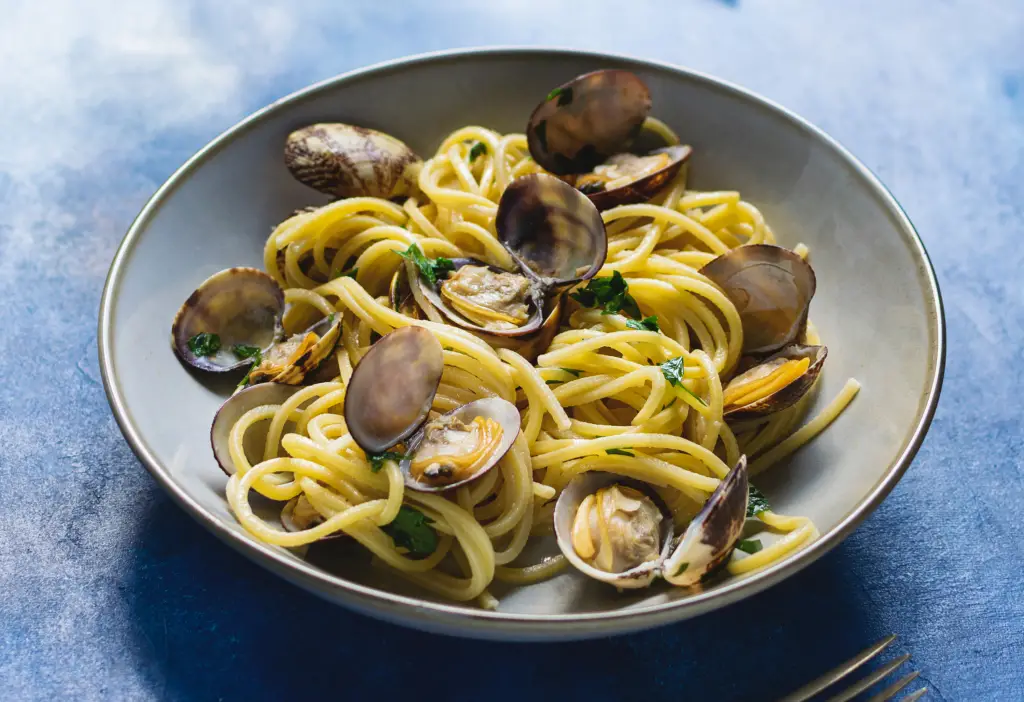
This is a classic Italian pasta dish that combines linguine with clams in a garlic and white wine sauce. It’s a simple yet flavorful dish that’s perfect for seafood lovers. Here’s a recipe for Linguine alle Vongole:
Italian Food – Ingredients:
- 400g linguine
- 500g fresh clams, cleaned and rinsed
- 4 cloves garlic, thinly sliced
- 1/4 teaspoon red pepper flakes (adjust to taste)
- 1/4 cup fresh parsley, chopped
- 1/2 cup dry white wine
- 4 tablespoons extra-virgin olive oil
- Salt and freshly ground black pepper, to taste
- 1 lemon, zested (optional)
Italian Food – Preparation Instructions:
Preparing the Clams
Place the clams in a bowl of cold water with a pinch of salt for about 20 minutes. This will help them release any sand. Rinse the clams thoroughly under cold water to remove any remaining grit.
Cooking the Pasta
Bring a large pot of salted water to a boil. Add the linguine and cook until al dente, or according to the package instructions. Reserve about 1 cup of pasta water and then drain the pasta.
Making the Sauce:
In a large skillet or pan, heat the olive oil over medium heat. Add the thinly sliced garlic and red pepper flakes. Sauté until the garlic is golden but not browned.
Adding the Clams
Increase the heat to medium-high and add the clams to the skillet. Pour in the white wine and cover the skillet with a lid. Let the clams steam for about 5-7 minutes or until they open. Discard any clams that do not open.
Combining Pasta and Sauce
Add the drained linguine to the skillet with the clams. Toss gently to combine, allowing the pasta to absorb some of the sauce. If the mixture is too dry, add a bit of the reserved pasta water until you reach the desired consistency.
Finishing the Dish
Season with salt and freshly ground black pepper to taste. Stir in the chopped parsley and lemon zest (if using). Toss everything together until well combined.
Serve
Serve the Linguine alle Vongole immediately, garnished with additional parsley and a drizzle of good quality olive oil if desired.
Enjoy your meal with a glass of the same white wine used in the dish for a perfect pairing!
Note: Linguine alle Vongole can also be made with a tomato-based sauce. Simply add some cherry tomatoes to the skillet after sautéing the garlic and cook until they burst, then proceed with the rest of the recipe.
Italian Food – Osso Buco alla Milanese
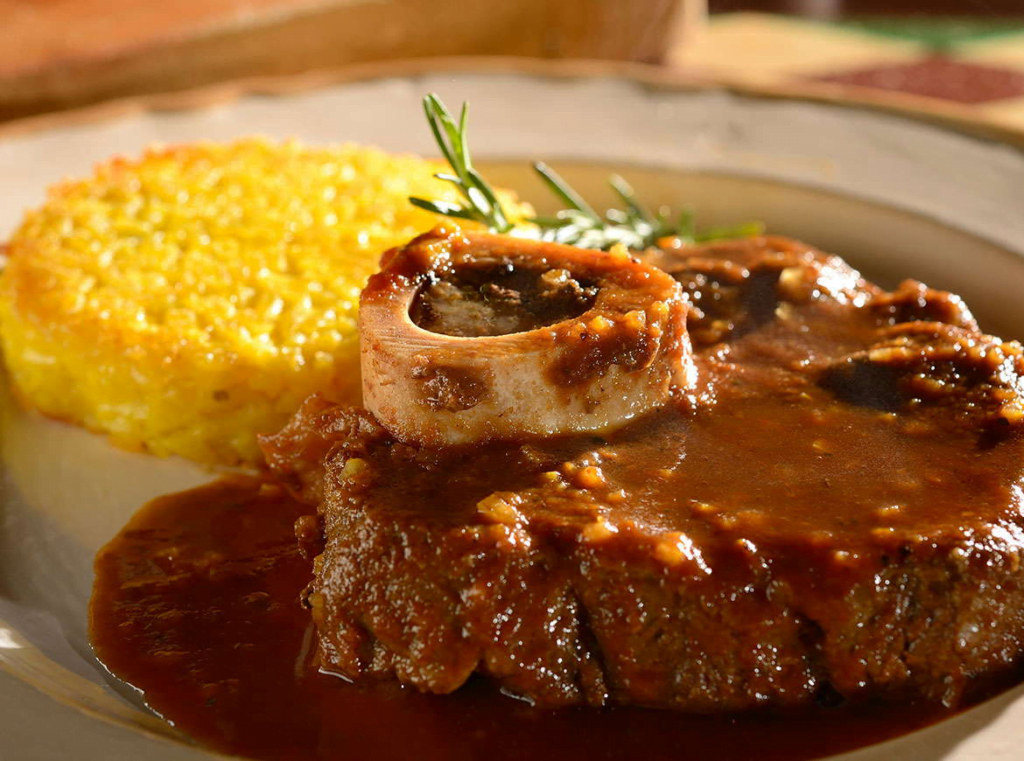
Osso Buco alla Milanese is a traditional Italian dish from Milan, made with braised veal shanks, cooked slowly in white wine and broth, and typically served with a saffron risotto. Here’s a recipe for Osso Buco alla Milanese:
Italian Food – Ingredients:
For the Osso Buco:
- 4 veal shanks (about 1.5 inches thick)
- 1 cup all-purpose flour (for dredging)
- 1 large onion, finely chopped
- 1 carrot, finely chopped
- 1 celery stalk, finely chopped
- 3 cloves garlic, minced
- 1 cup dry white wine
- 1 cup beef or chicken broth
- 1 can (400g) crushed tomatoes
- 1 bay leaf
- 1 teaspoon fresh thyme leaves or 1/2 teaspoon dried thyme
- Salt and freshly ground black pepper, to taste
- 4 tablespoons unsalted butter
- 4 tablespoons olive oil
- Zest of 1 lemon
Gremolata (a traditional garnish for Osso Buco):
- 2 cloves garlic, minced
- Zest of 1 lemon
- 1/4 cup fresh parsley, finely chopped
Italian Food – Preparation Instructions:
Preparing the Veal Shanks
Season the veal shanks with salt and pepper. Dredge each shank in flour, shaking off the excess.
Browning the Veal Shanks
In a large, heavy-bottomed skillet or Dutch oven, heat the butter and olive oil over medium-high heat. Add the veal shanks and brown on all sides, about 3-4 minutes per side. Remove the shanks and set them aside.
Sautéing the Vegetables
In the same skillet, add the chopped onion, carrot, and celery. Sauté until the vegetables are softened, about 5 minutes. Add the minced garlic and sauté for another minute.
Deglazing the Pan
Pour in the white wine, scraping the bottom of the pan to release any browned bits. Allow the wine to simmer and reduce by half.
Braising the Veal Shanks
Return the browned veal shanks to the skillet. Add the crushed tomatoes, beef or chicken broth, bay leaf, and thyme. Bring the mixture to a simmer, then reduce the heat to low. Cover and let it simmer for about 1.5 to 2 hours, or until the meat is tender and falling off the bone.
Preparing the Gremolata
In a small bowl, combine the minced garlic, lemon zest, and chopped parsley. Mix well.
Serving
Once the veal shanks are tender, remove the bay leaf. Serve the Osso Buco hot, sprinkled with the gremolata and accompanied by saffron risotto or mashed potatoes.
Enjoy your Osso Buco alla Milanese with a glass of Italian red wine for a perfect meal!
Note: The marrow in the bone is considered a delicacy. You can scoop it out and spread it on crusty bread or mix it into the sauce for added richness.
Italian Cuisine – Lasagna

History and Background of Lasagna
Lasagna is one of the oldest types of pasta, with a history that traces back to ancient Greece. The term “lasagna” originally referred to the pot in which the dish was cooked rather than the food itself. It was later adopted by the Romans as “lasanum” to mean a cooking pot in Latin. The Italians then used the word to refer to the dish in which lasagna is made.
The modern form of lasagna, layers of pasta with sauce and other ingredients such as meats, vegetables, and cheese, is believed to have originated in the Middle Ages in the region of Emilia-Romagna, particularly in the city of Bologna, which is known for its rich and flavorful cuisine.
The traditional lasagna al forno (baked lasagna) from this region is typically made with green spinach pasta, creamy béchamel sauce, and ragù alla bolognese.
List of Ingredients for Lasagna
For the Bolognese Sauce
- 2 tablespoons olive oil
- 1 onion, finely chopped
- 2 garlic cloves, minced
- 1 carrot, finely chopped
- 1 celery stalk, finely chopped
- 1 pound ground beef
- 1/2 pound ground pork
- 1 cup red wine
- 2 cups tomato sauce
- Salt and pepper to taste
- A pinch of nutmeg
For the Béchamel Sauce
- 4 tablespoons butter
- 1/4 cup all-purpose flour
- 4 cups milk
- Salt and white pepper to taste
- A pinch of nutmeg
Additional Ingredients
- 12 to 15 lasagna noodles (either no-boil or cooked al dente)
- 2 cups grated Parmigiano-Reggiano cheese
- 1 pound mozzarella cheese, sliced or shredded
- Fresh basil leaves (optional, for garnish)
Italian Food Recipe for Lasagna
Prepare the Bolognese Sauce
- Heat olive oil in a large pot over medium heat. Add the onion, garlic, carrot, and celery, and sauté until softened.
- Increase the heat, add the ground beef and pork, and cook until browned. Drain excess fat.
- Pour in the red wine and simmer until reduced by half.
- Stir in the tomato sauce, season with salt, pepper, and a pinch of nutmeg. Simmer on low heat for 1 to 1.5 hours, stirring occasionally.
Prepare the Béchamel Sauce
- Melt butter in a saucepan over medium heat. Add flour and whisk until smooth.
- Gradually add milk, whisking constantly to prevent lumps. Cook until the sauce thickens and coats the back of a spoon.
- Season with salt, white pepper, and a pinch of nutmeg. Remove from heat.
Assemble the Lasagna
- Preheat the oven to 375°F (190°C).
- Spread a thin layer of béchamel sauce on the bottom of a baking dish.
- Place a layer of lasagna noodles over the béchamel.
- Spread a layer of the Bolognese sauce over the noodles, then a layer of béchamel sauce, and sprinkle with Parmigiano-Reggiano.
- Add a layer of mozzarella cheese.
- Repeat the layers (noodles, Bolognese, béchamel, Parmigiano-Reggiano, mozzarella) until all ingredients are used, finishing with béchamel sauce and a generous sprinkle of Parmigiano-Reggiano on top.
Bake the Lasagna
- Cover the baking dish with foil and bake for 25 minutes.
- Remove the foil and bake for another 25 minutes or until the top is golden and bubbly.
- Let the lasagna rest for 15 minutes before serving.
Serve
- Cut the lasagna into squares and serve garnished with fresh basil leaves if desired.
Lasagna is a comforting dish that has been embraced and adapted in various forms around the world. Its layers of pasta, rich sauces, and melted cheese make it a hearty and beloved staple of Italian cuisine.
Italian Food – Spaghetti Carbonara
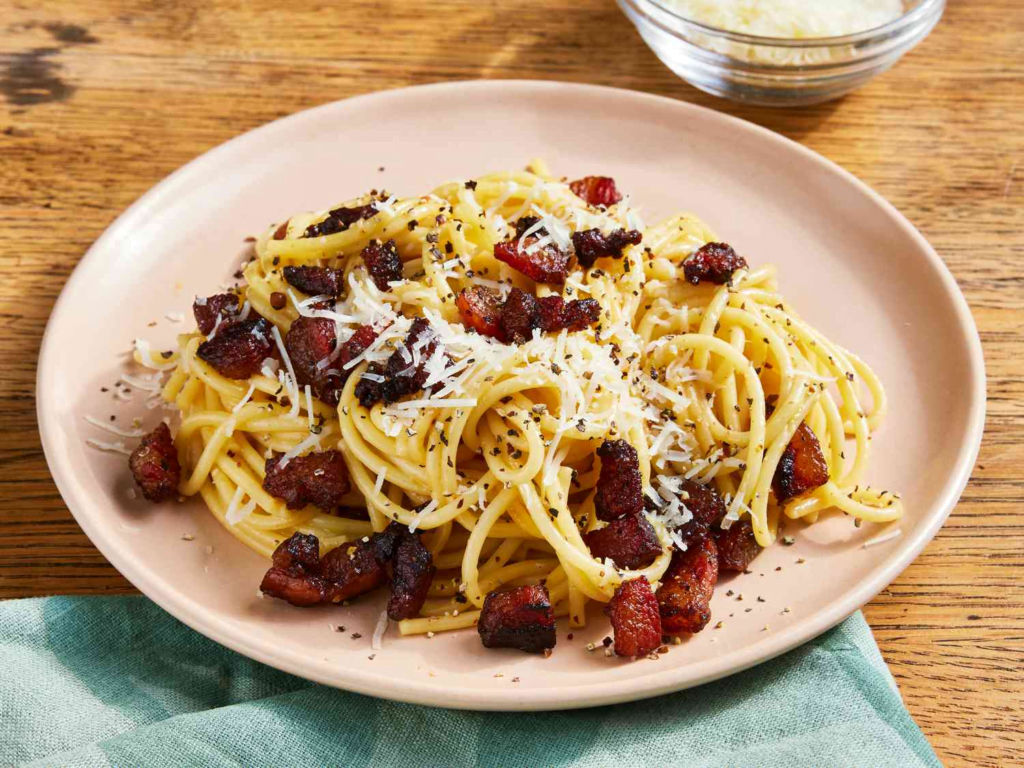
Spaghetti Carbonara is a classic Roman dish known for its simplicity and rich flavors. It’s made with eggs, cheese (Pecorino Romano), pancetta, and black pepper. Here’s a recipe for traditional Spaghetti Carbonara:
Italian Food – Ingredients:
- 400g spaghetti
- 100g pancetta or guanciale, diced
- 3 large eggs
- 1 cup Pecorino Romano cheese, freshly grated
- 1 clove garlic, peeled
- Freshly ground black pepper, to taste
- Salt, to taste
- 2 tablespoons olive oil or unsalted butter
- Fresh parsley, chopped (optional for garnish)
Preparation Instructions:
- Cooking the Spaghetti: Bring a large pot of salted water to a boil. Add the spaghetti and cook until al dente, or according to the package instructions. Reserve 1 cup of pasta water and then drain the pasta.
- Preparing the Sauce: In a bowl, whisk together the eggs, grated Pecorino Romano cheese, and a generous amount of freshly ground black pepper until well combined. Set aside.
- Cooking the Pancetta: In a large skillet or pan, heat the olive oil or butter over medium heat. Add the peeled garlic clove to infuse the oil. After a minute, remove the garlic and add the diced pancetta or guanciale. Cook until it’s crispy and golden brown.
- Combining Pasta and Sauce: Remove the skillet from the heat. Add the drained spaghetti to the skillet and toss to coat the pasta in the pancetta fat.
- Finishing the Dish: Remove the skillet from the heat entirely to ensure the eggs don’t scramble. Quickly pour the egg and cheese mixture over the pasta. Toss vigorously, using some of the reserved pasta water if needed to create a creamy sauce that clings to the spaghetti. The heat from the pasta will cook the eggs and melt the cheese.
- Serving: Serve the Spaghetti Carbonara immediately, garnished with additional Pecorino Romano cheese, more black pepper, and chopped parsley if desired.
Enjoy your meal with a glass of white wine or a light Italian red!
Note: Traditional Spaghetti Carbonara does not contain cream. The creamy sauce is achieved by the combination of eggs and cheese. It’s essential to mix the hot pasta with the egg mixture away from direct heat to prevent the eggs from scrambling.
Italian Food – Tiramisu
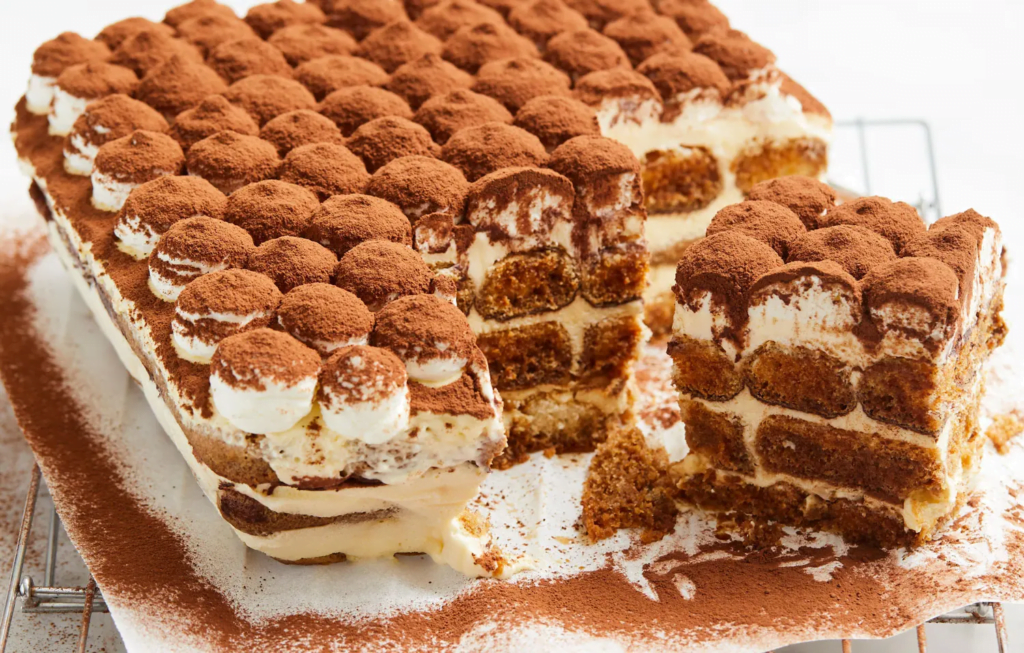
Tiramisu is a classic Italian dessert that means “pick me up” in Italian, likely referring to the caffeine from the espresso and the energy from the sugar and eggs. It’s a layered dessert made with ladyfingers soaked in coffee, layered with a mascarpone mixture, and topped with cocoa powder. Here’s a recipe for traditional Tiramisu:
Italian Food – Ingredients:
- 3 large egg yolks
- 3/4 cup granulated sugar.
- 1 cup mascarpone cheese
- 1 1/2 cups heavy whipping cream
- 1 teaspoon vanilla extract
- 1 cup strong brewed coffee or espresso, cooled to room temperature.
- 3 tablespoons coffee liqueur (e.g., Kahlúa), optional
- 24 to 30 ladyfingers (savoiardi)
- Unsweetened cocoa powder, for dusting
- Dark chocolate shavings (optional, for garnish)
Preparation Instructions:
Making the Mascarpone Mixture
- In a heatproof bowl, whisk together the egg yolks and sugar. Place the bowl over a pot of simmering water (double boiler) and whisk continuously until the mixture is pale and slightly thickened. This can take about 5 minutes. Remove from heat and allow to cool.
- In a separate bowl, whisk the mascarpone cheese until smooth.
- In another bowl, whip the heavy whipping cream until stiff peaks form. Add vanilla extract and mix.
- Gently fold the egg yolk mixture into the mascarpone cheese until smooth.
- Carefully fold in the whipped cream until the mixture is smooth and well combined.
Assembling the Tiramisu
- In a shallow dish, combine the brewed coffee and coffee liqueur, if using.
- Quickly dip each ladyfinger into the coffee mixture, ensuring they don’t get too soggy. Lay the dipped ladyfingers in the bottom of a serving dish, covering the base.
- Spread half of the mascarpone mixture over the ladyfingers.
- Add another layer of dipped ladyfingers on top of the mascarpone mixture.
- Spread the remaining mascarpone mixture over the second layer of ladyfingers.
Chilling
- Cover the tiramisu with plastic wrap and refrigerate for at least 4 hours, preferably overnight. This allows the flavors to meld and the dessert to set.
Serving
- Before serving, dust the top of the tiramisu generously with unsweetened cocoa powder using a fine sieve or sifter.
- Optionally, garnish with dark chocolate shavings.
- Serve chilled.
Enjoy your Tiramisu with a cup of espresso or your favorite dessert wine!
Note: To ensure food safety, it’s recommended to use pasteurized eggs since the egg yolks are not cooked to a temperature that would kill potential bacteria. If you’re concerned about raw eggs, you can find recipes that use a cooked custard base or opt for versions that don’t use eggs at all.
Conclusion
Exploring Italy’s national dish has taken us on a journey through the heart of traditional Italian cuisine. We have discovered the significance of popular Italian recipes and iconic Italian dishes that have captured the world’s attention. From regional specialties to traditional Italian meals, we have celebrated the rich variety of flavors and ingredients that distinguish Italian food.
But what makes Italian cuisine truly special is its authenticity. We have unveiled the secrets behind the art of simplicity in Italian cooking and the importance of fresh ingredients and regional variations. The best Italian food dishes are a gastronomic delight, showcasing the essence of classic Italian food.
As we conclude our exploration of Italy’s national dish, we invite you to indulge in the magic of Italian cooking. Savor the timeless delights that make it a culinary treasure. Whether you are a food enthusiast or simply looking for a taste of authentic Italian food, there is something for everyone to enjoy in the traditional dishes from Italy.
FAQ’s
What is Italy’s national dish?
Italy’s national dish is pasta, which comes in a variety of shapes and is often served with different sauces and toppings.
What are some popular Italian recipes?
Some popular Italian recipes include pizza, lasagna, risotto, and tiramisu.
What are some iconic Italian dishes?
Iconic Italian dishes include spaghetti carbonara, bruschetta, caprese salad, and gelato.
What are some famous Italian dishes?
Famous Italian dishes include spaghetti bolognese, margherita pizza, pesto pasta, and cannoli.
What are some traditional dishes from Italy?
Traditional dishes from Italy include osso buco, minestrone soup, panettone, and arancini.
What are some traditional Italian meals?
Traditional Italian meals often consist of multiple courses, starting with antipasti (appetizers), followed by a primo (first course), secondo (main course), and dolce (dessert).
What are some of the best Italian dishes?
Some of the best Italian dishes include spaghetti alla carbonara, lasagna alla Bolognese, ravioli with sage butter, and tiramisu.
What defines classic Italian Food?
Classic Italian food is known for its use of fresh, high-quality ingredients, simple preparations, and emphasis on enhancing natural flavors rather than heavy sauces or seasonings.
What are the secrets of authentic Italian Food?
The secrets of authentic Italian food lie in using fresh, locally sourced ingredients, respecting regional variations, and embracing simplicity in cooking techniques to let the flavors shine through.
This Article was last edited on

